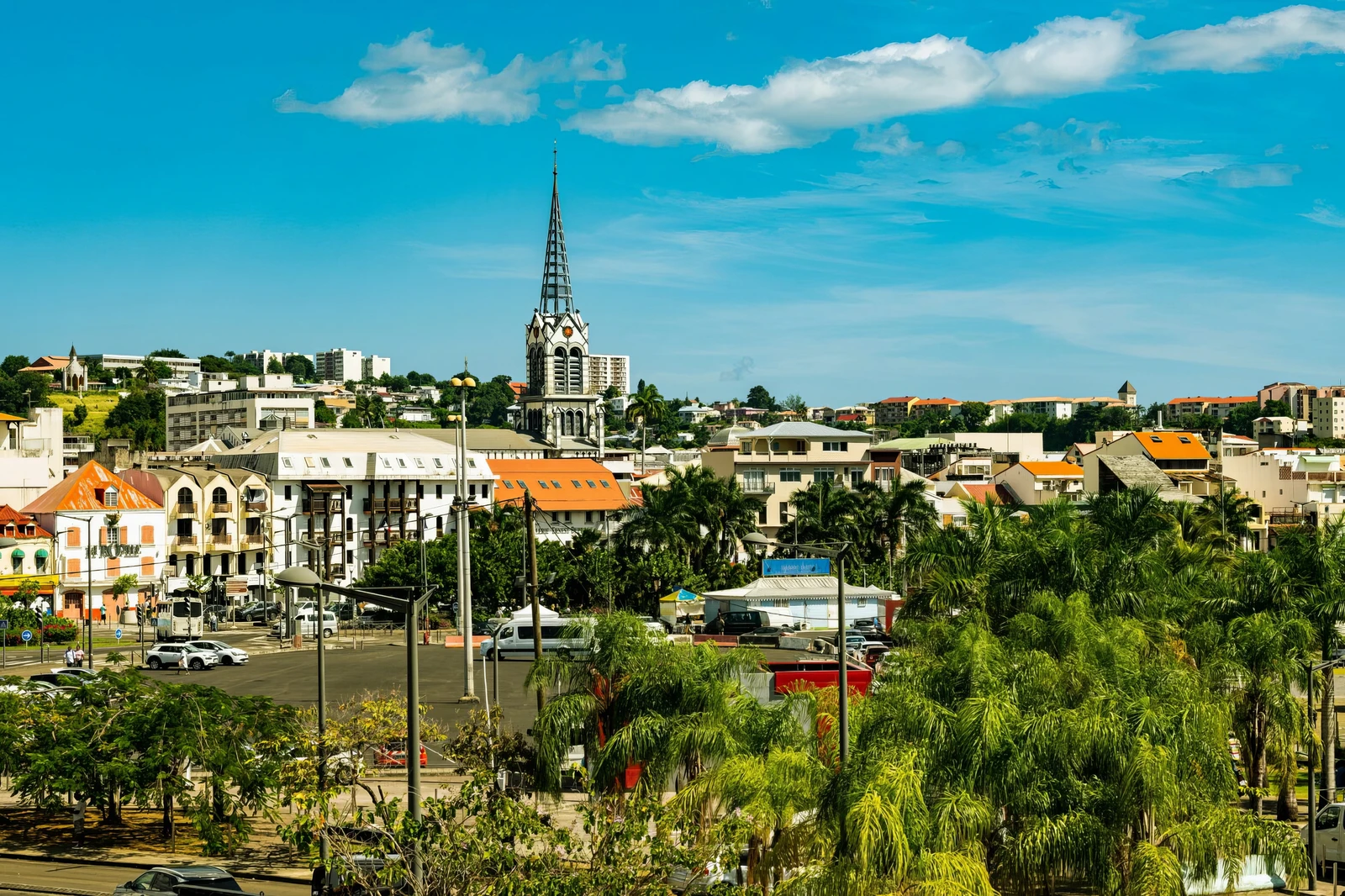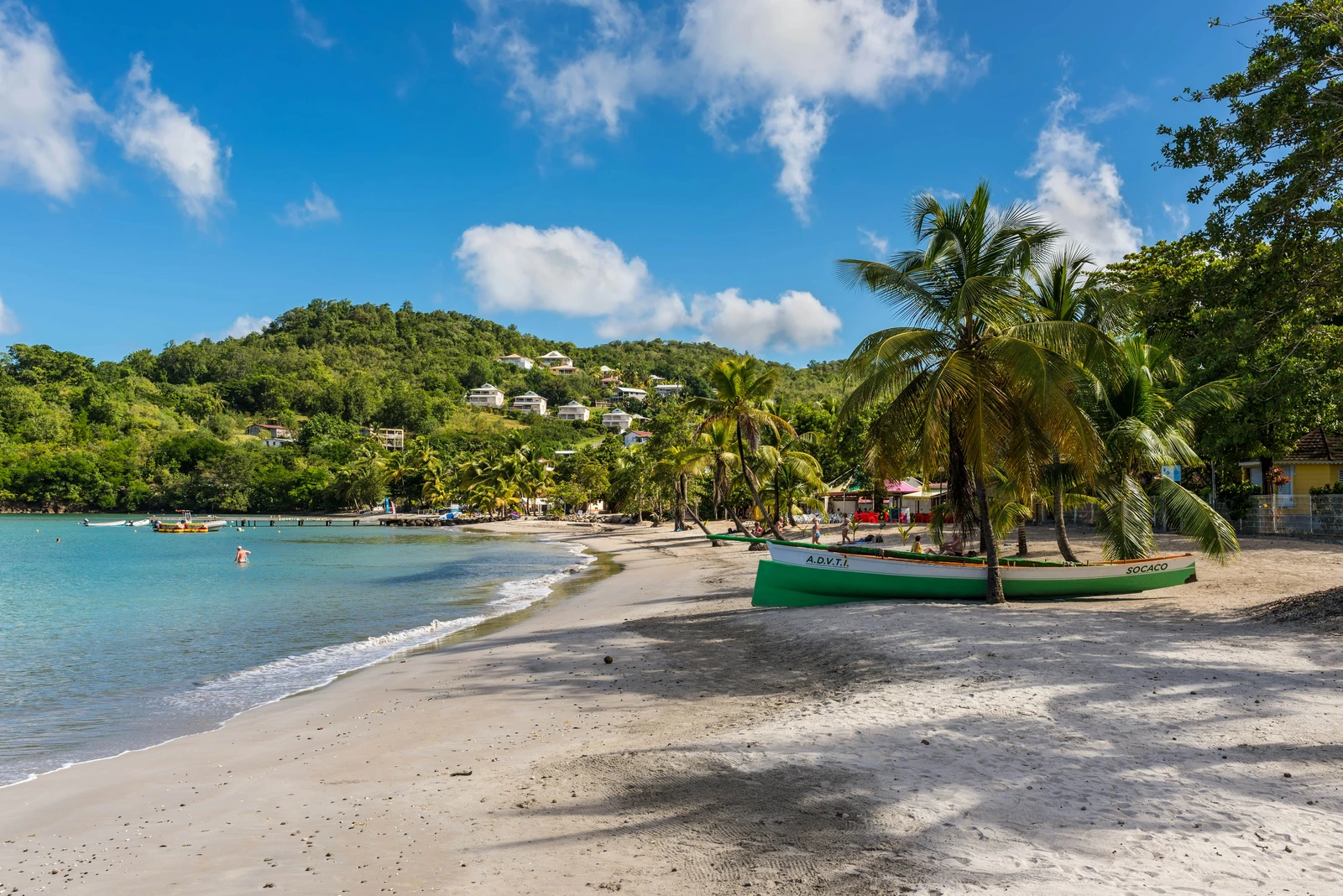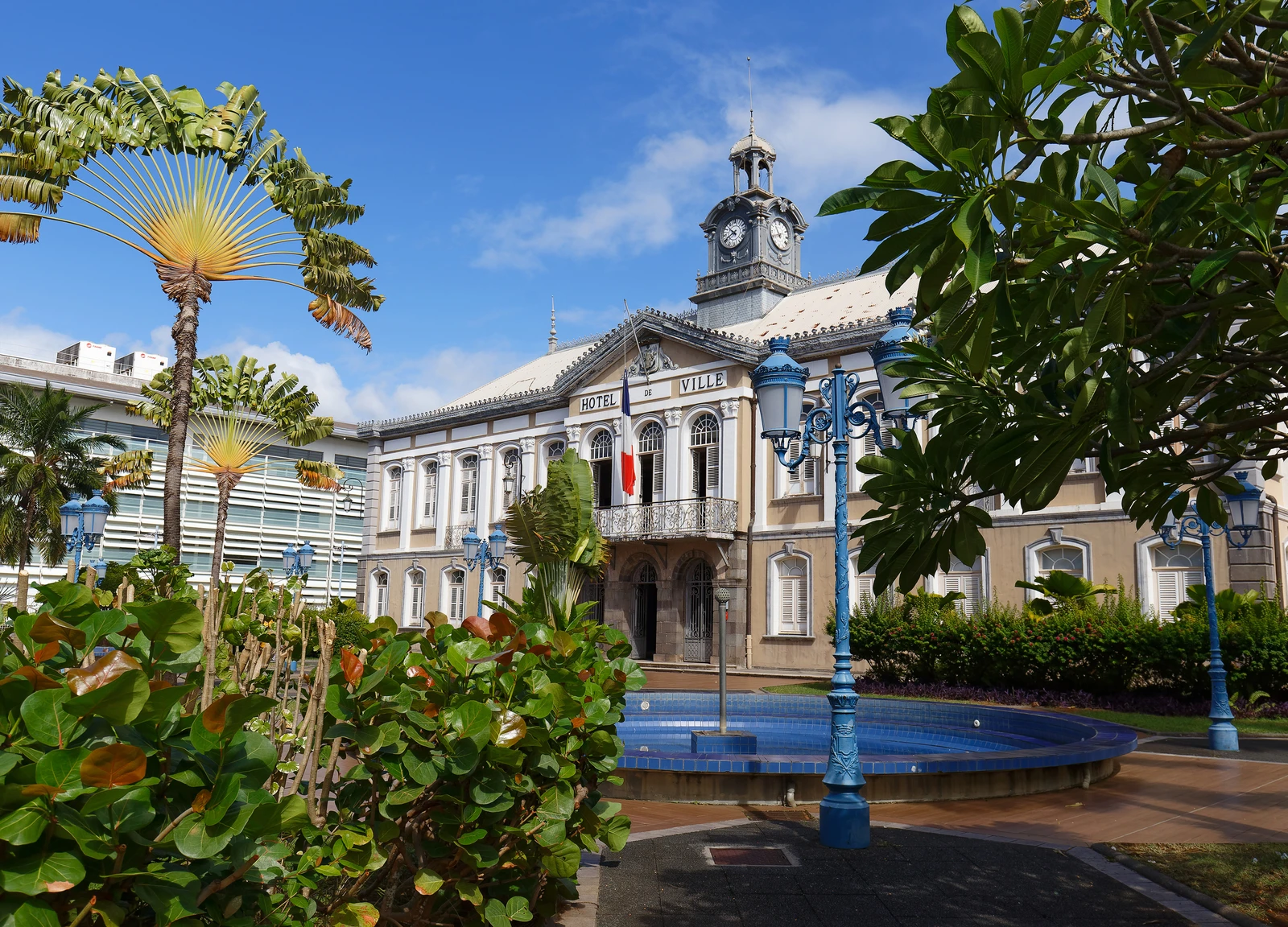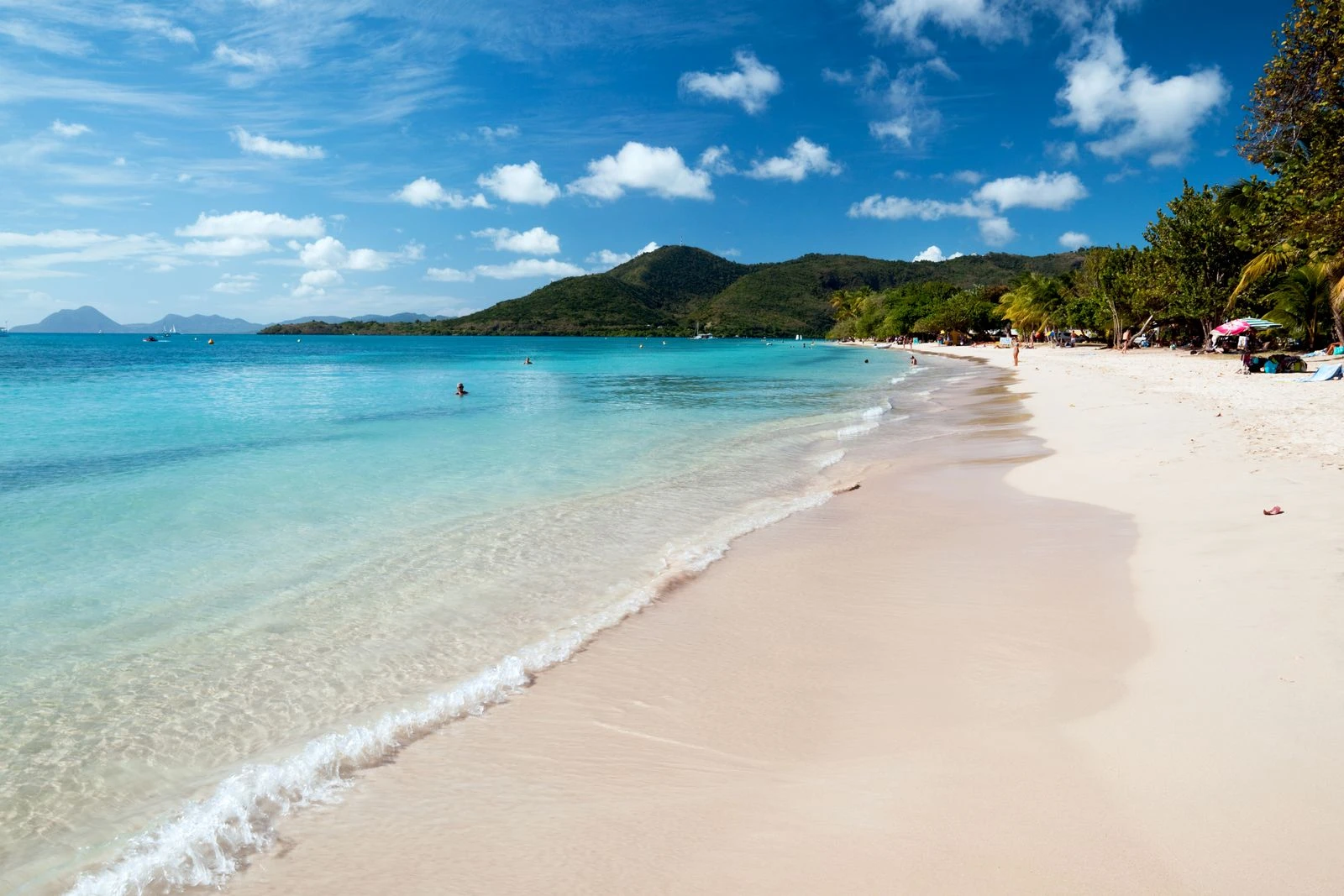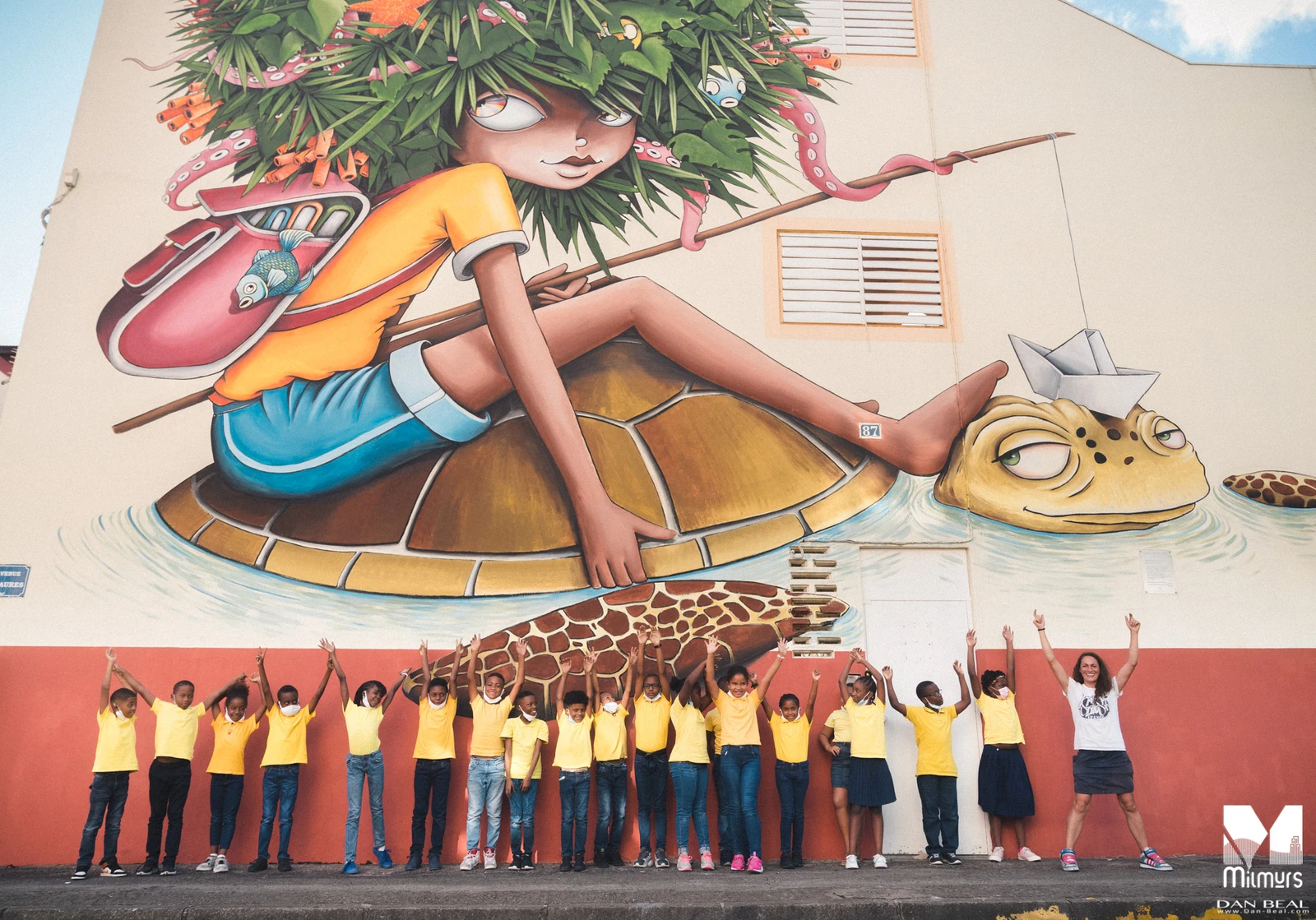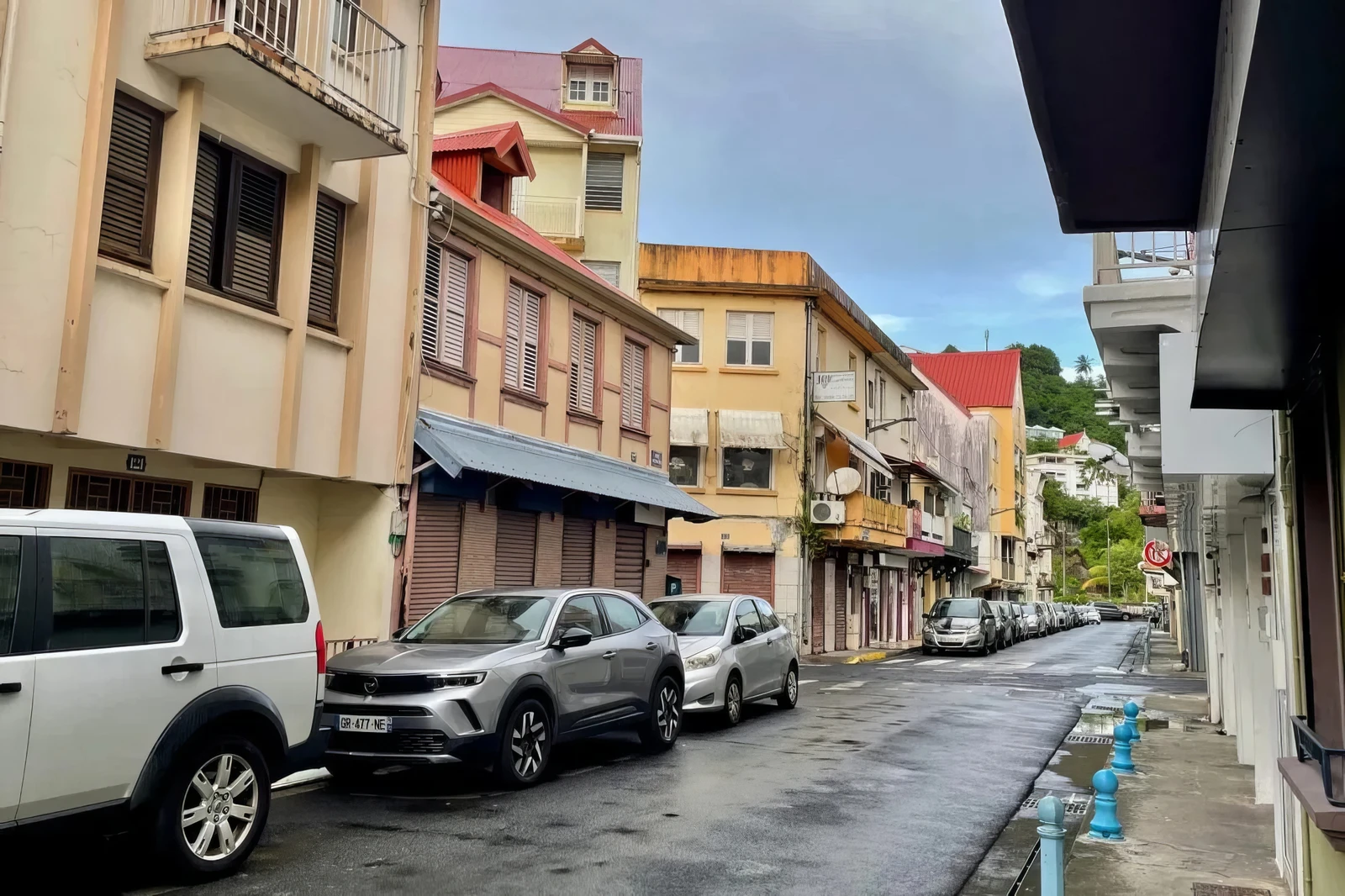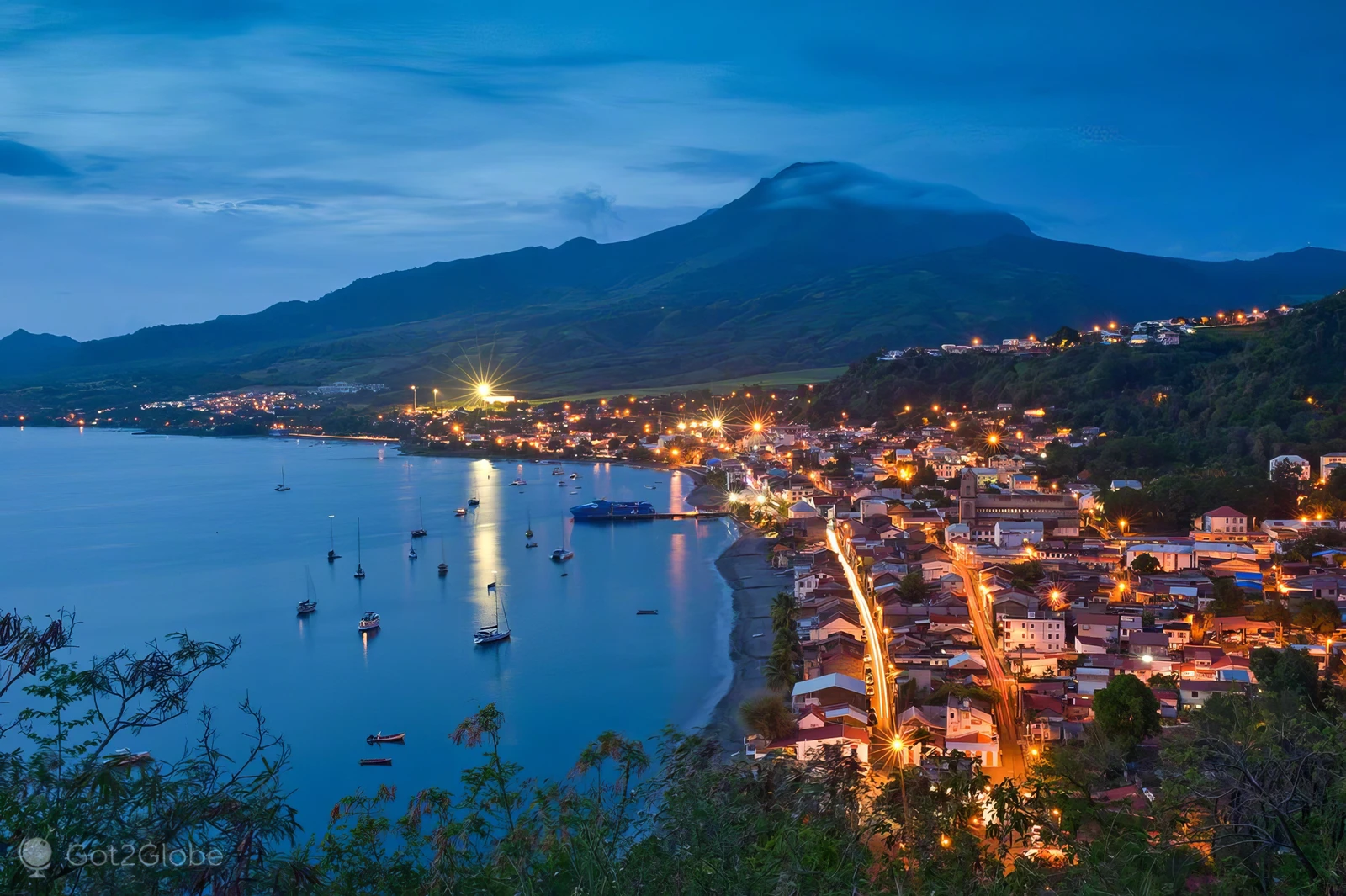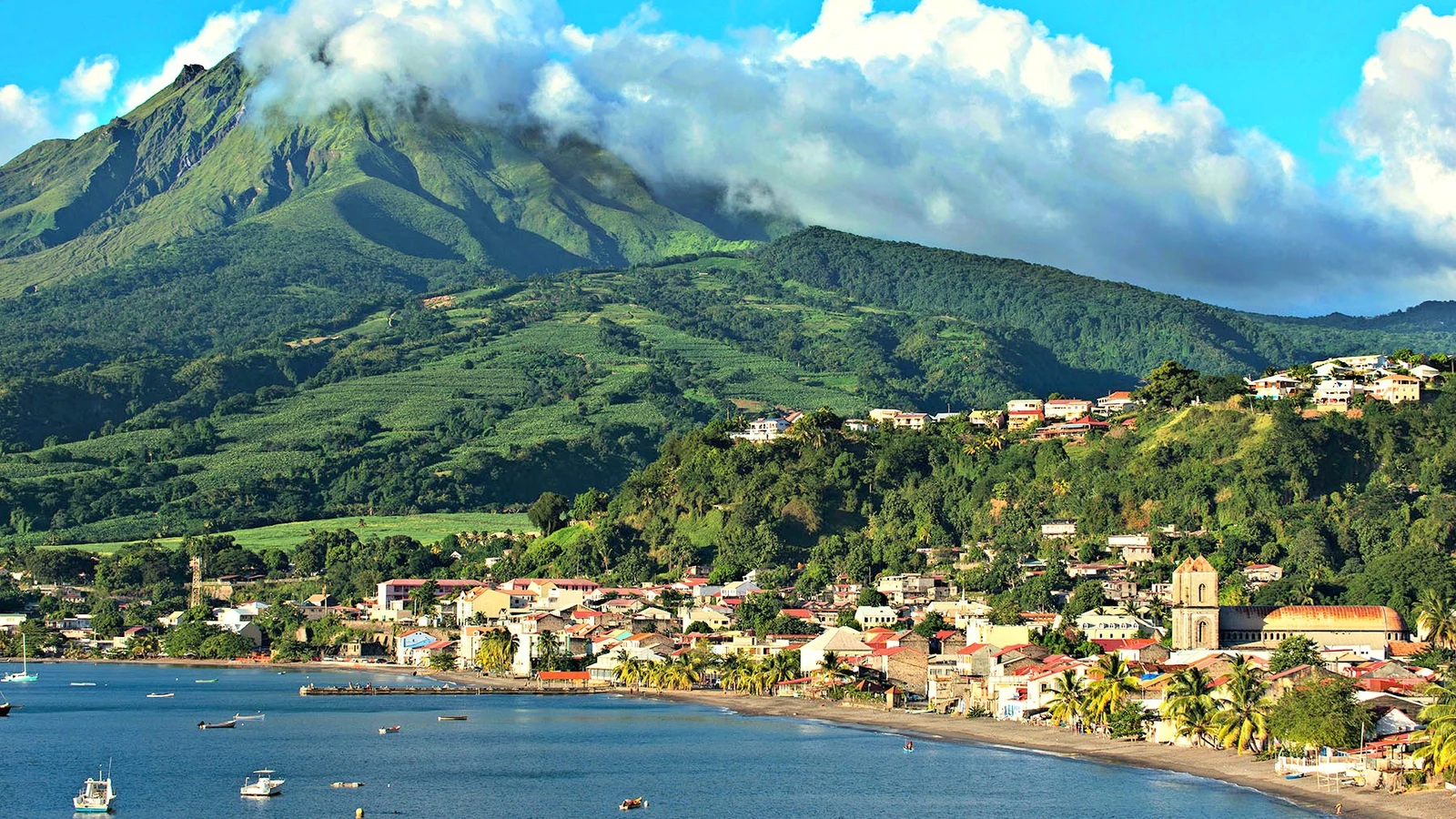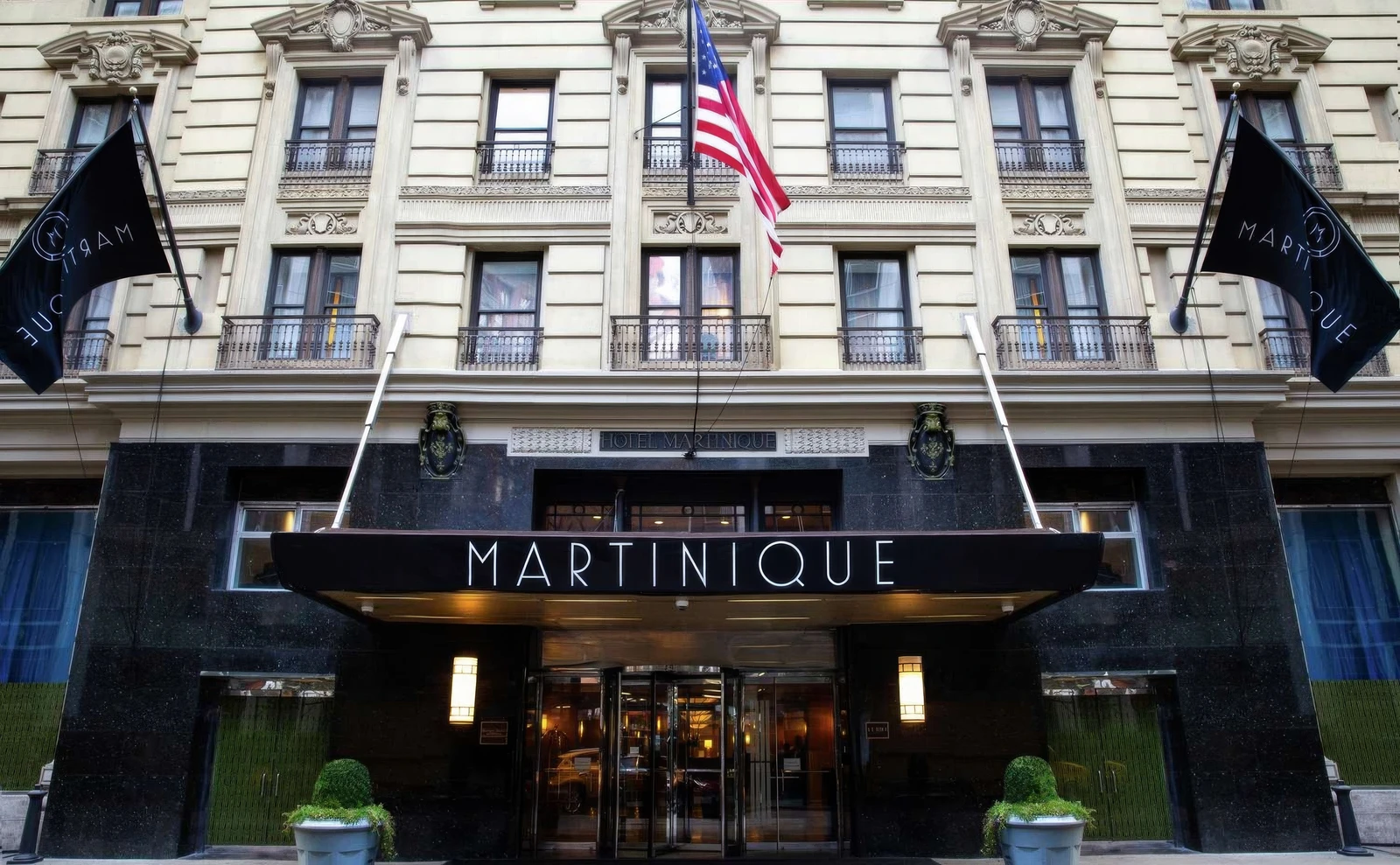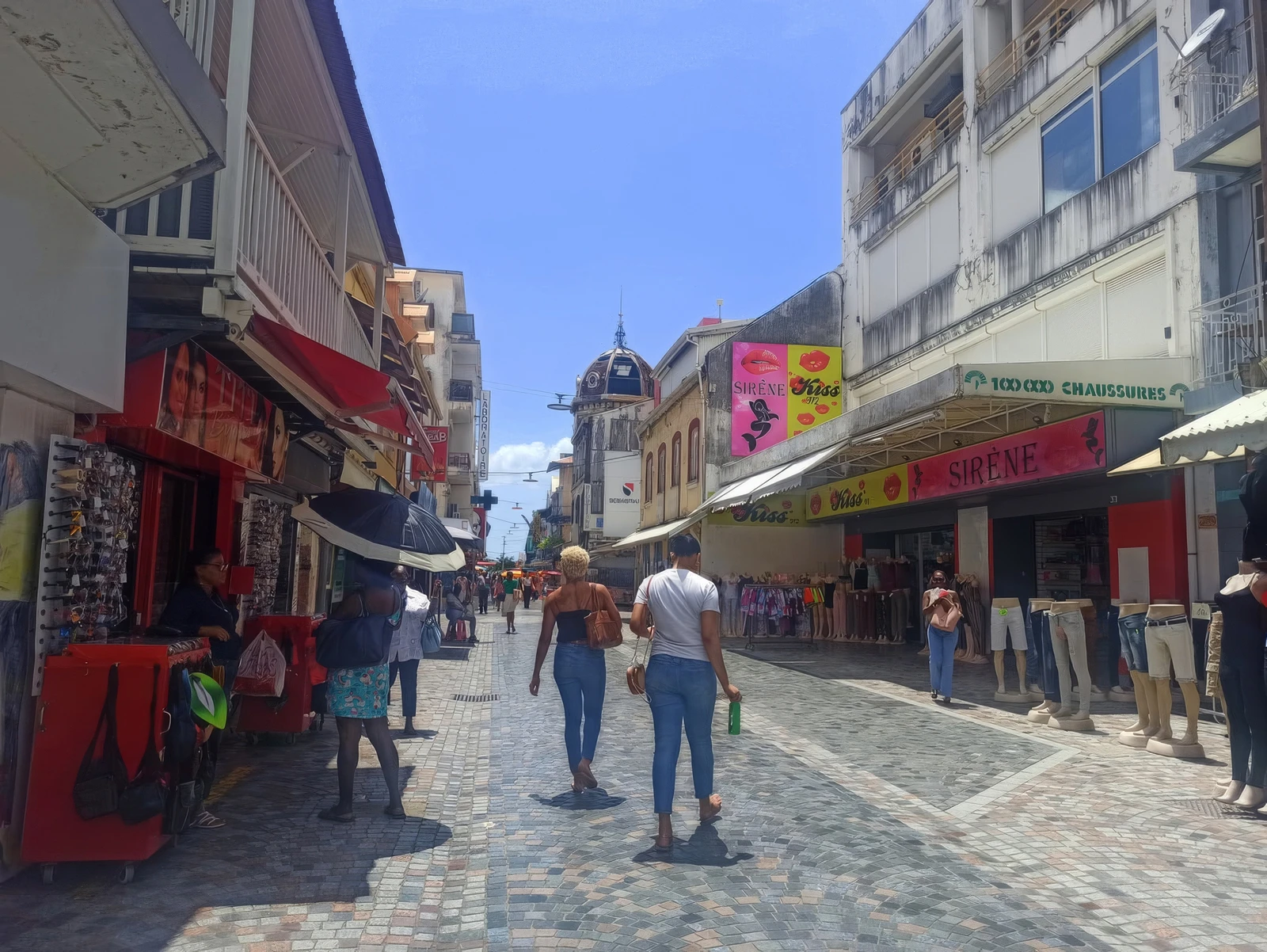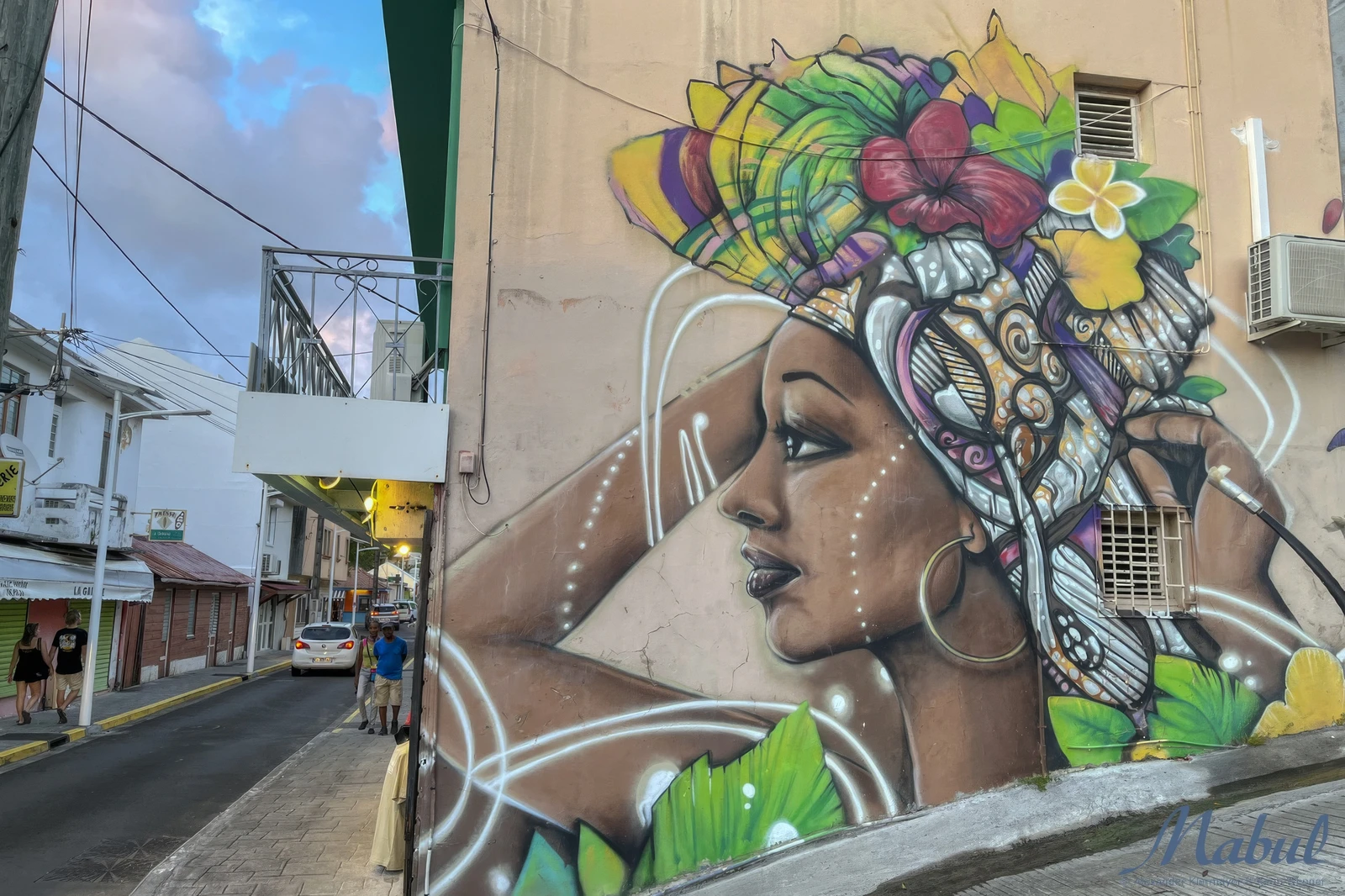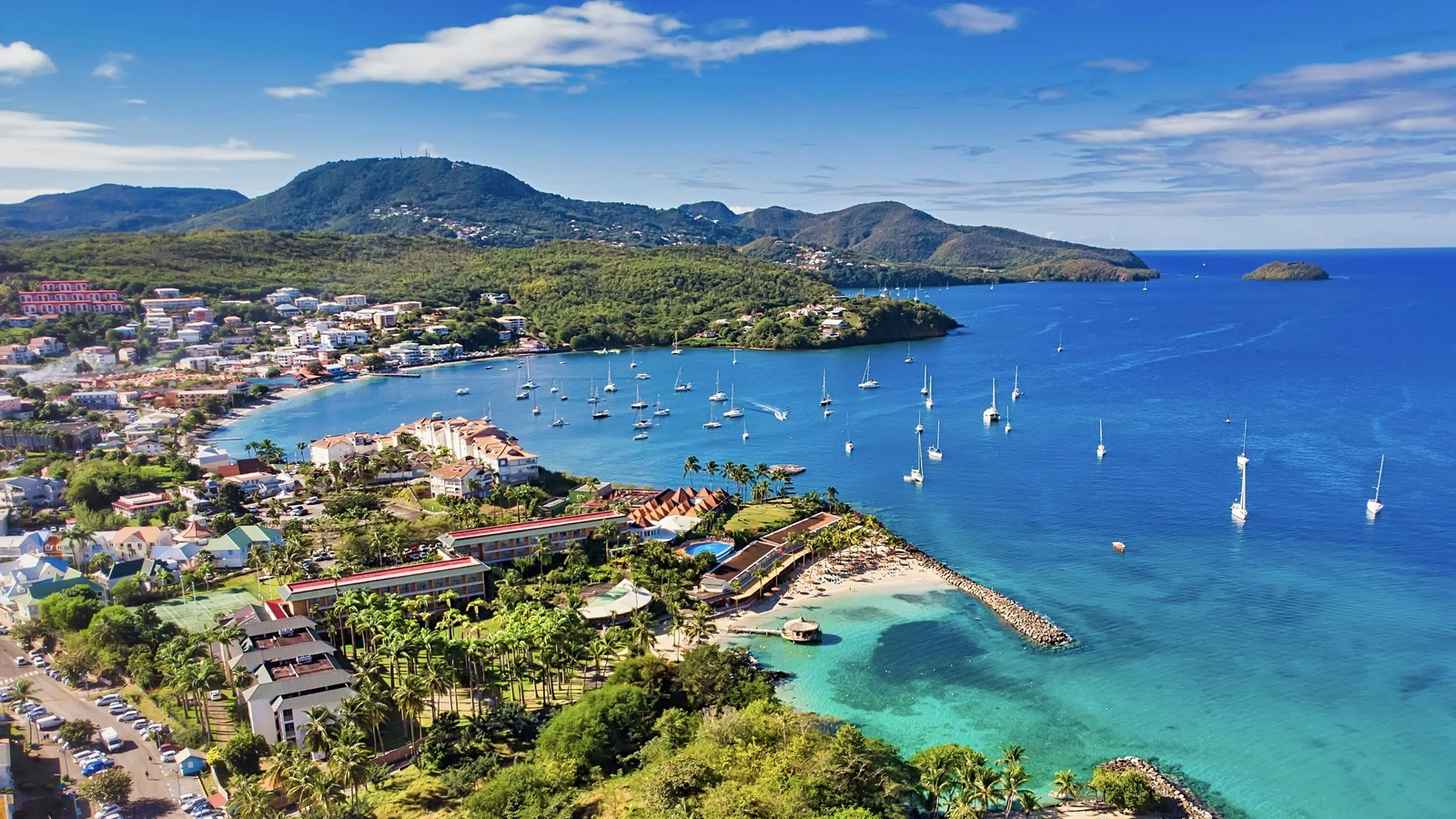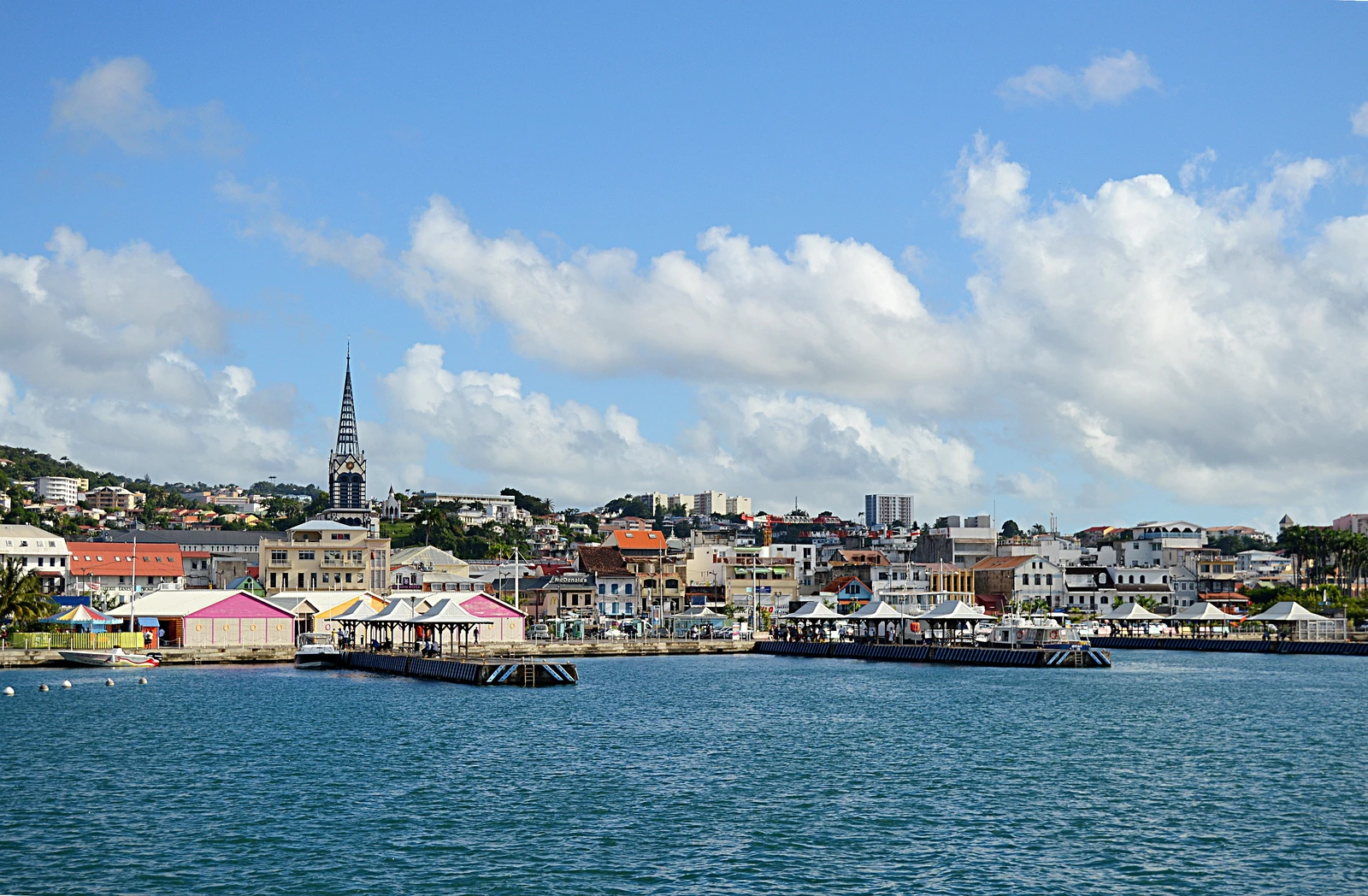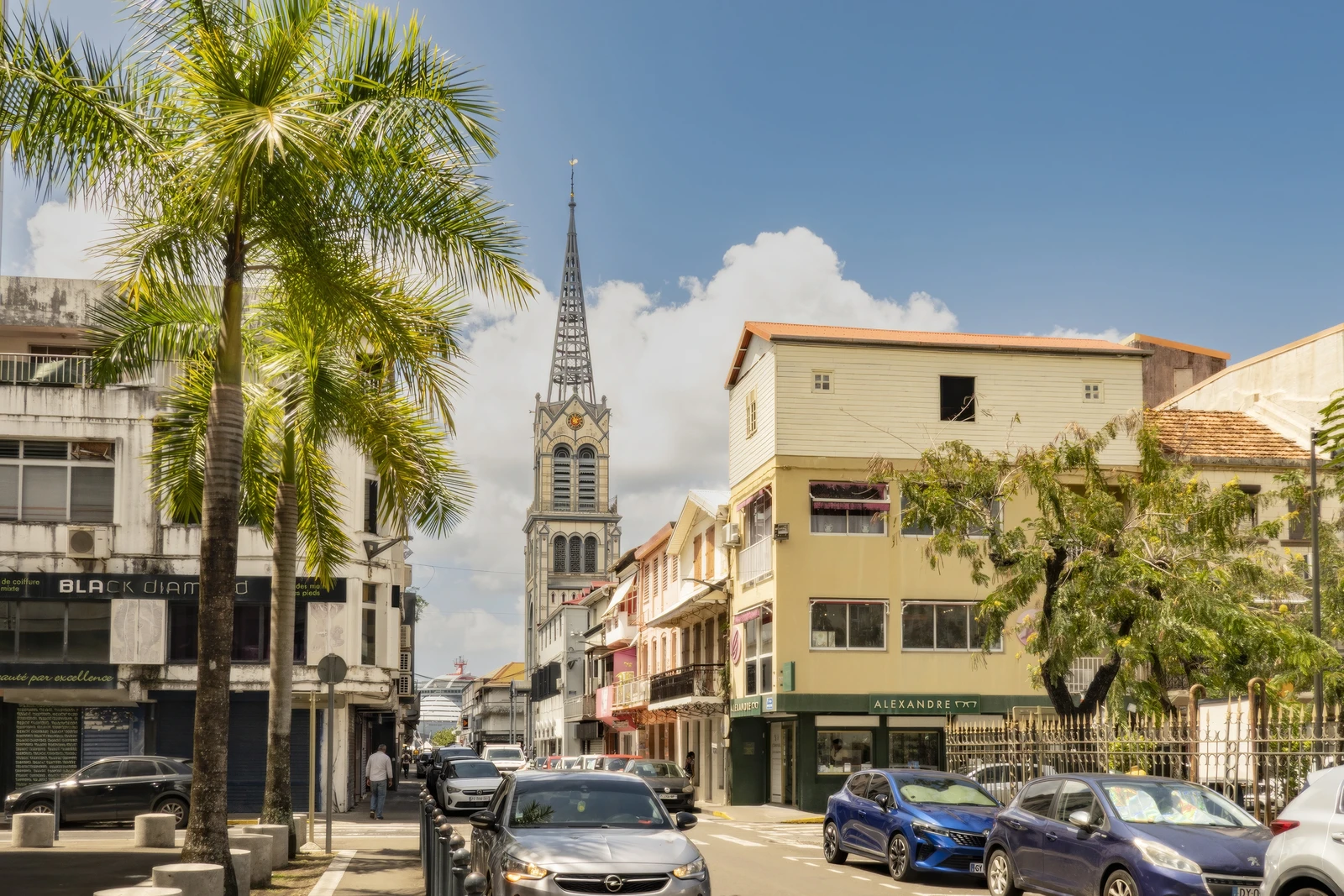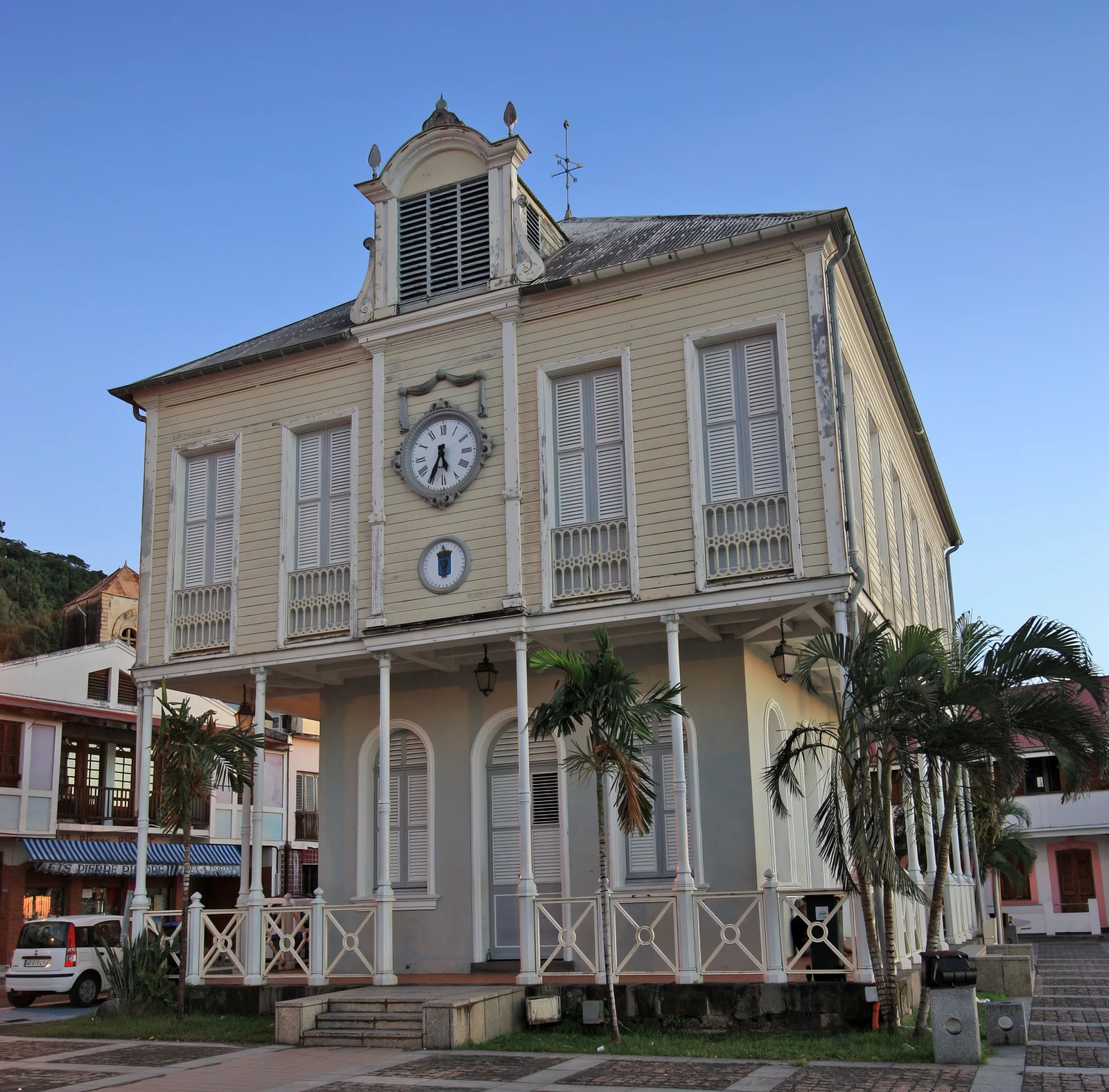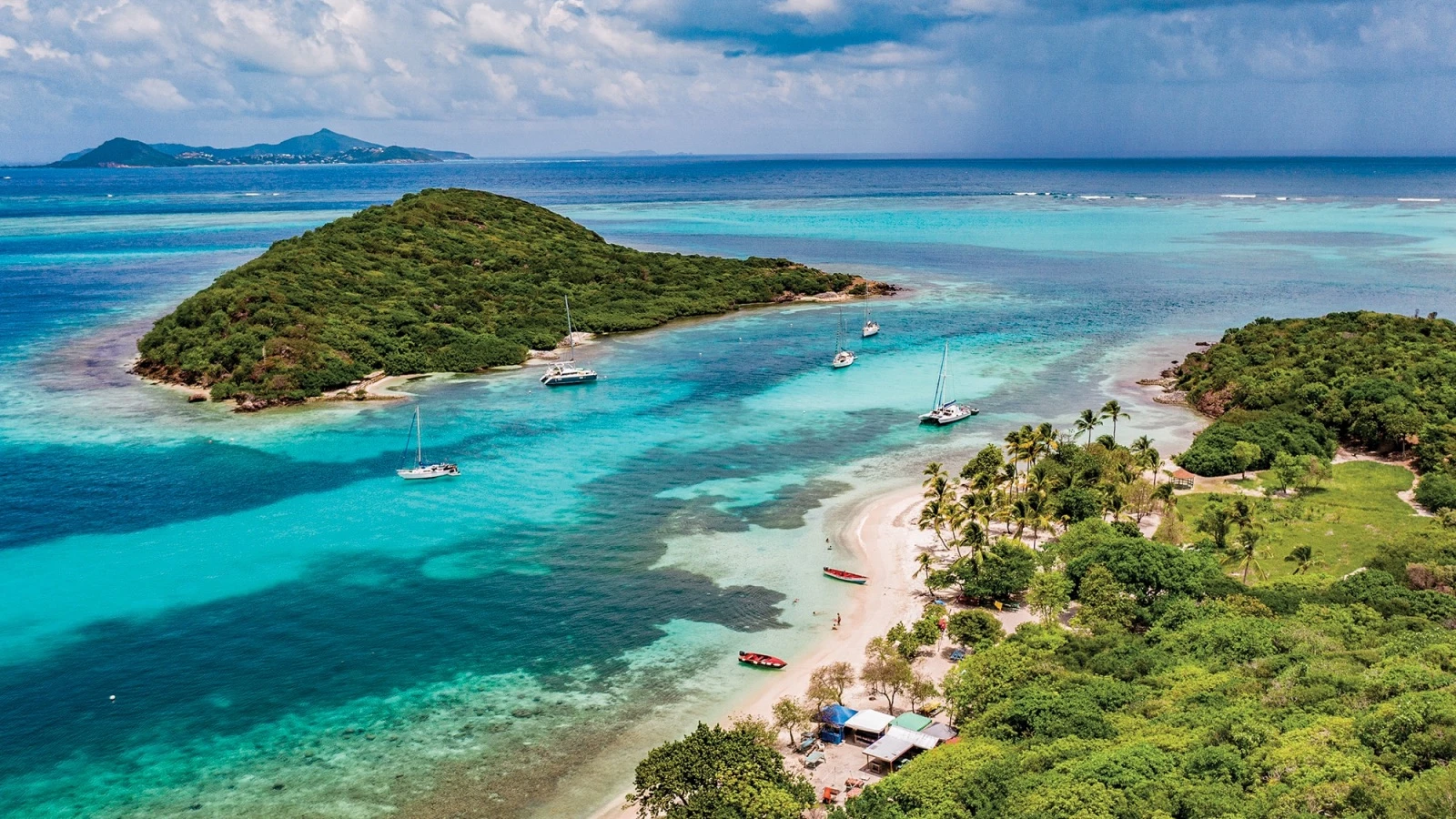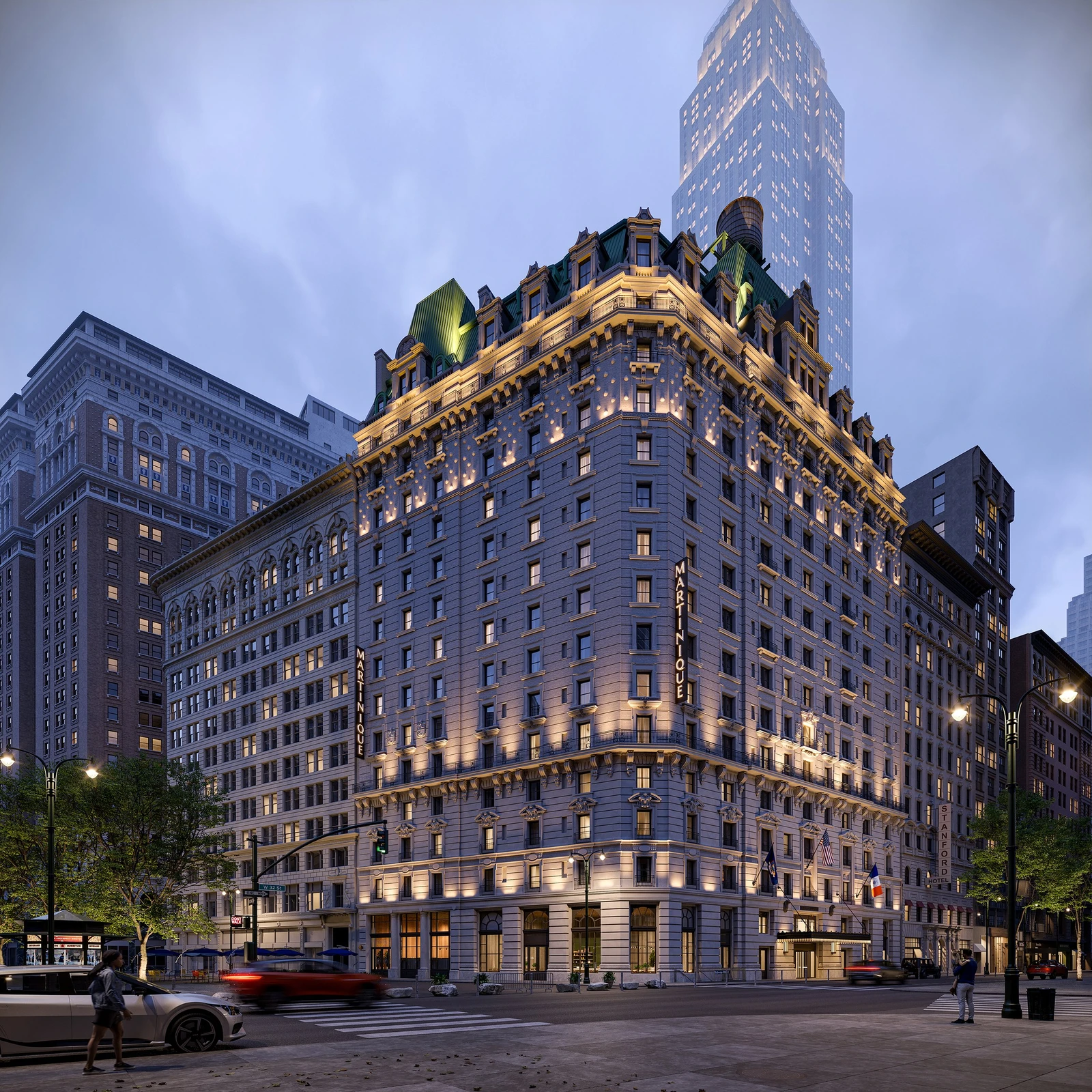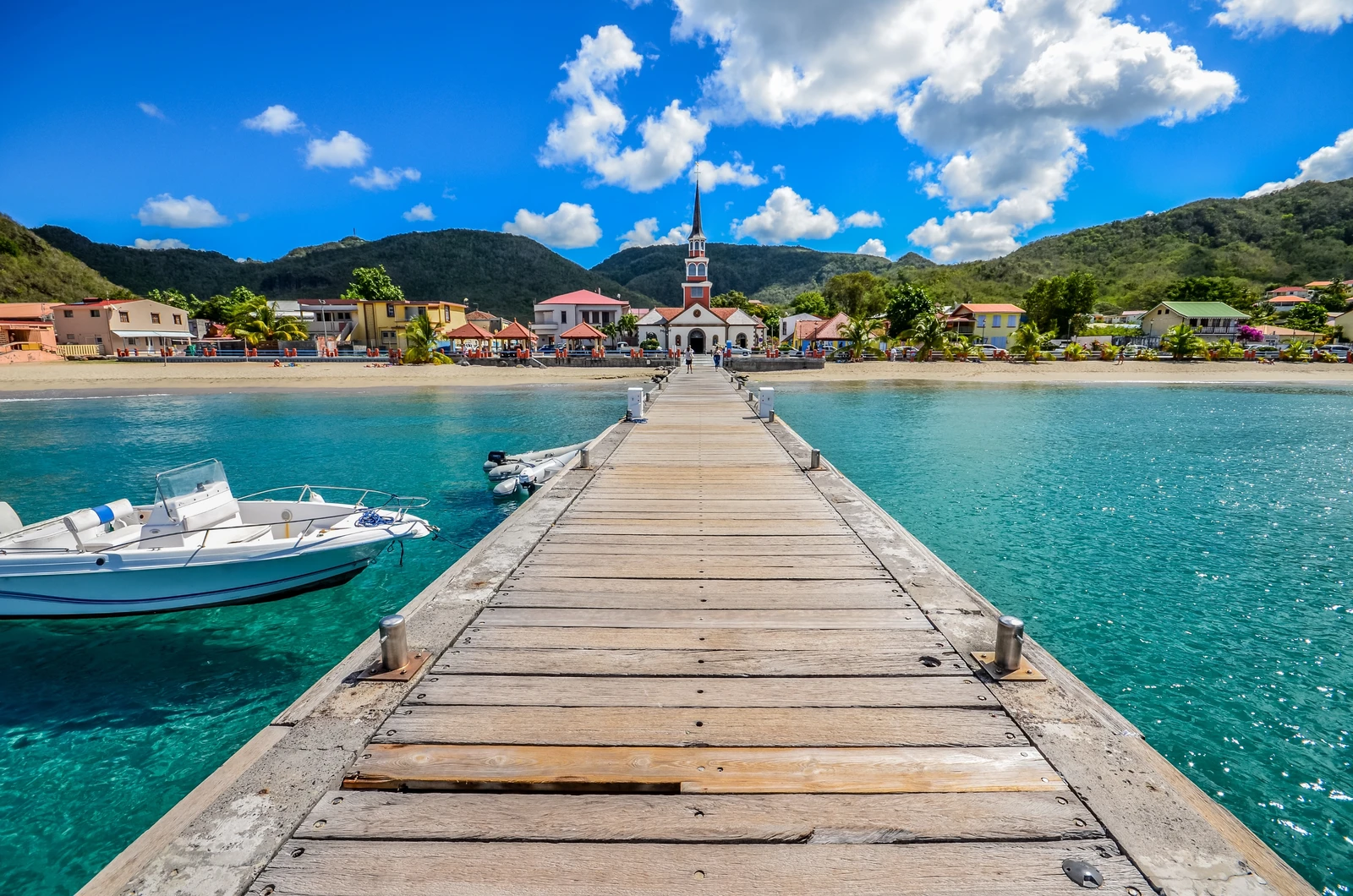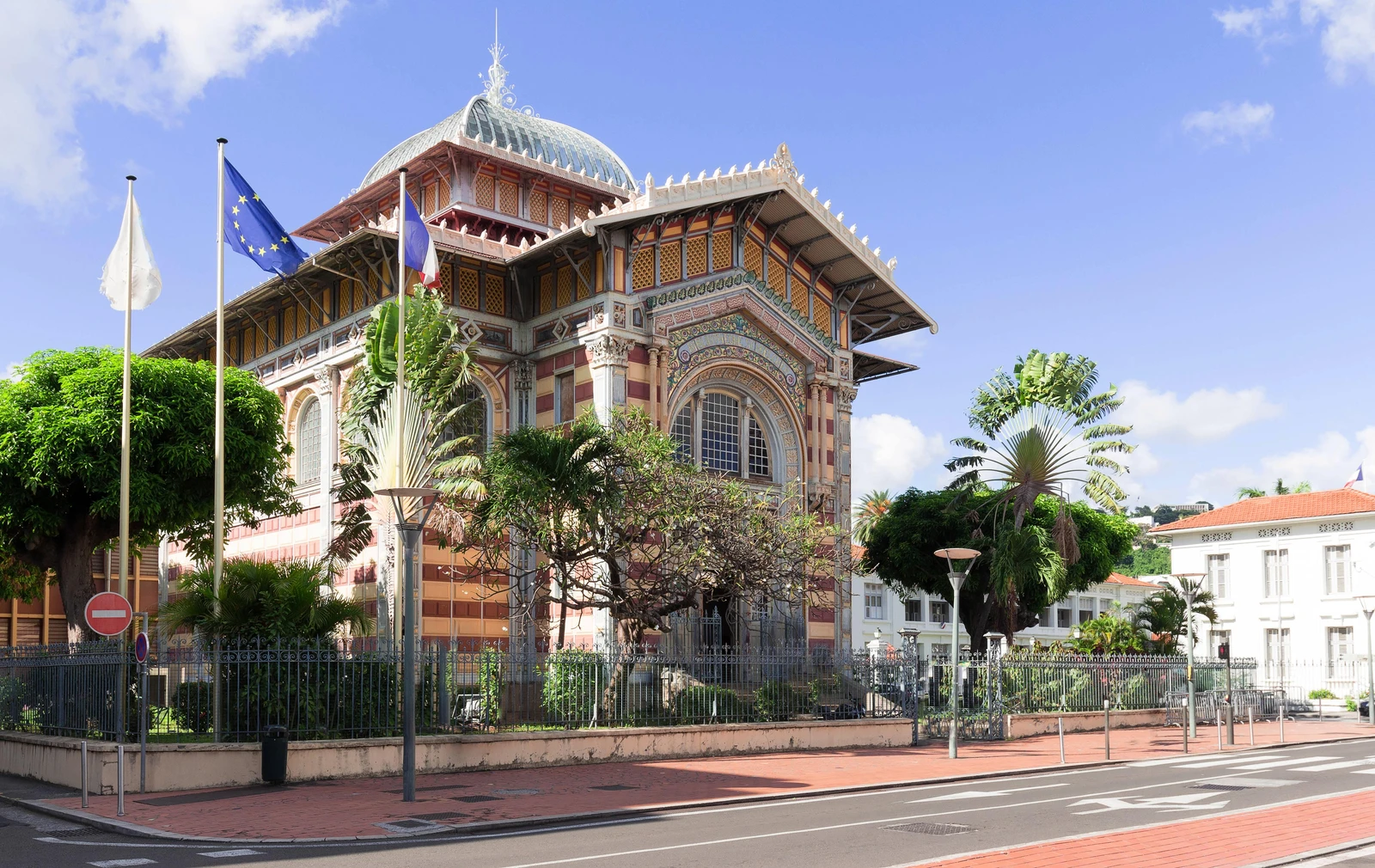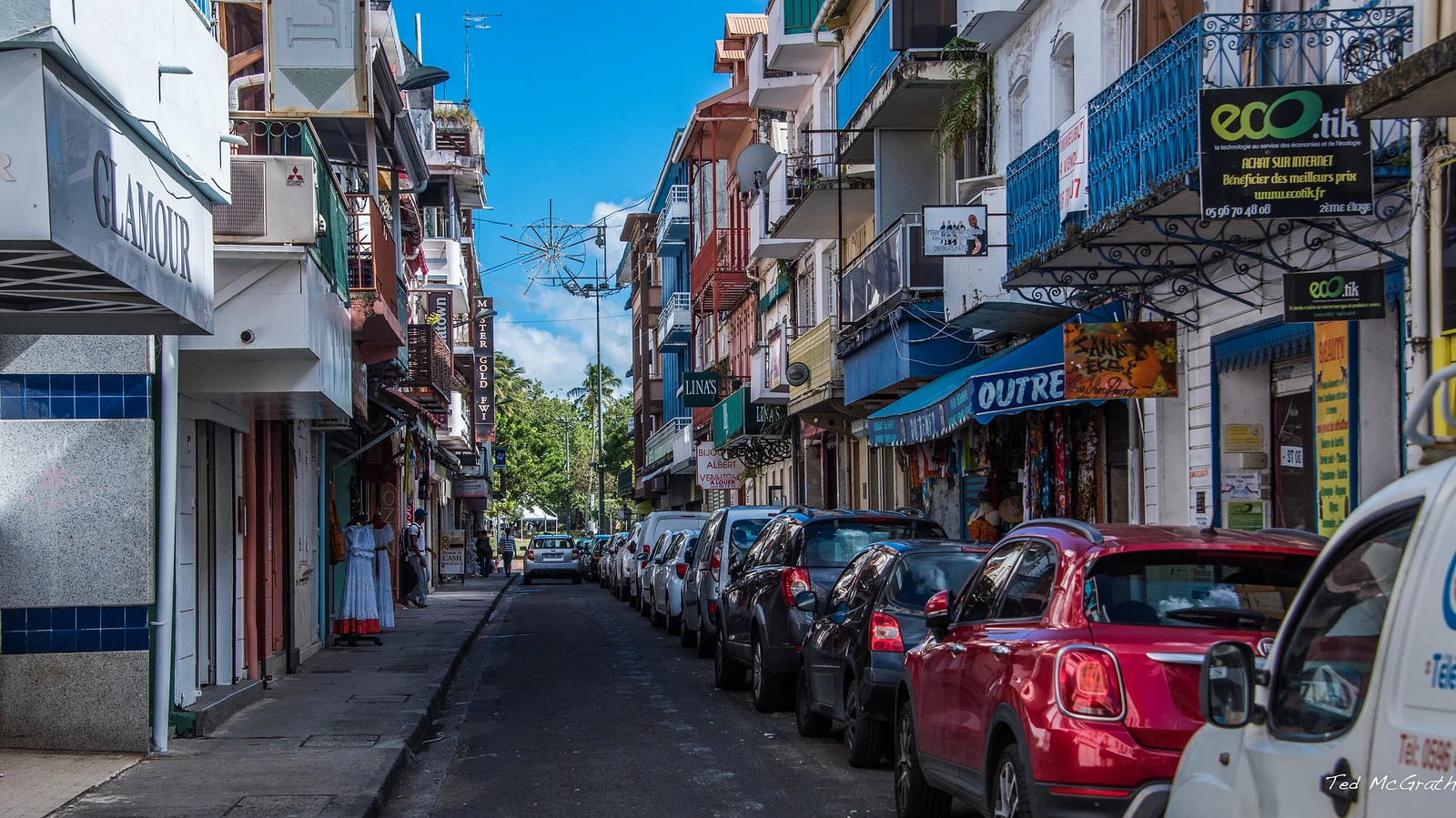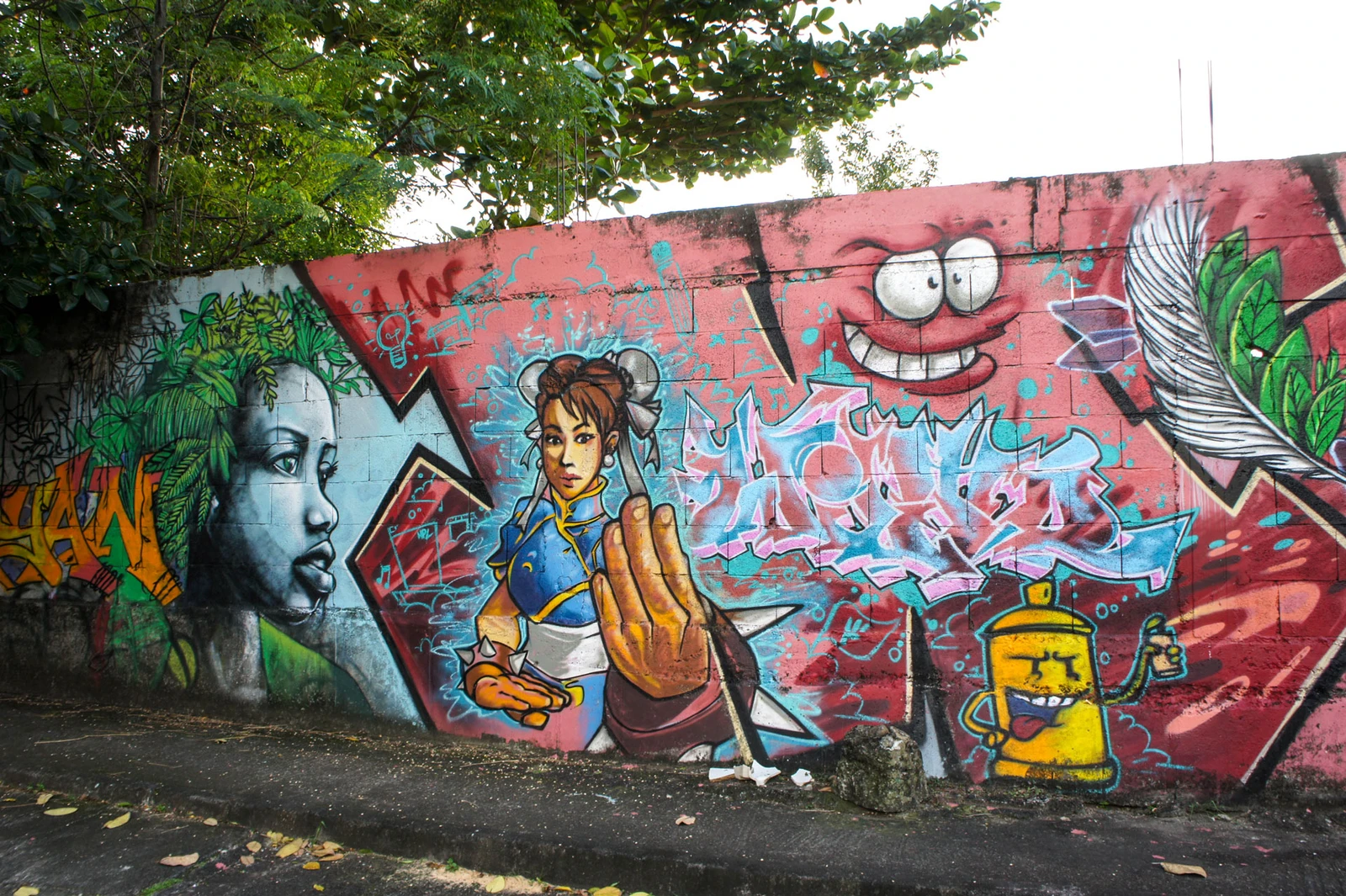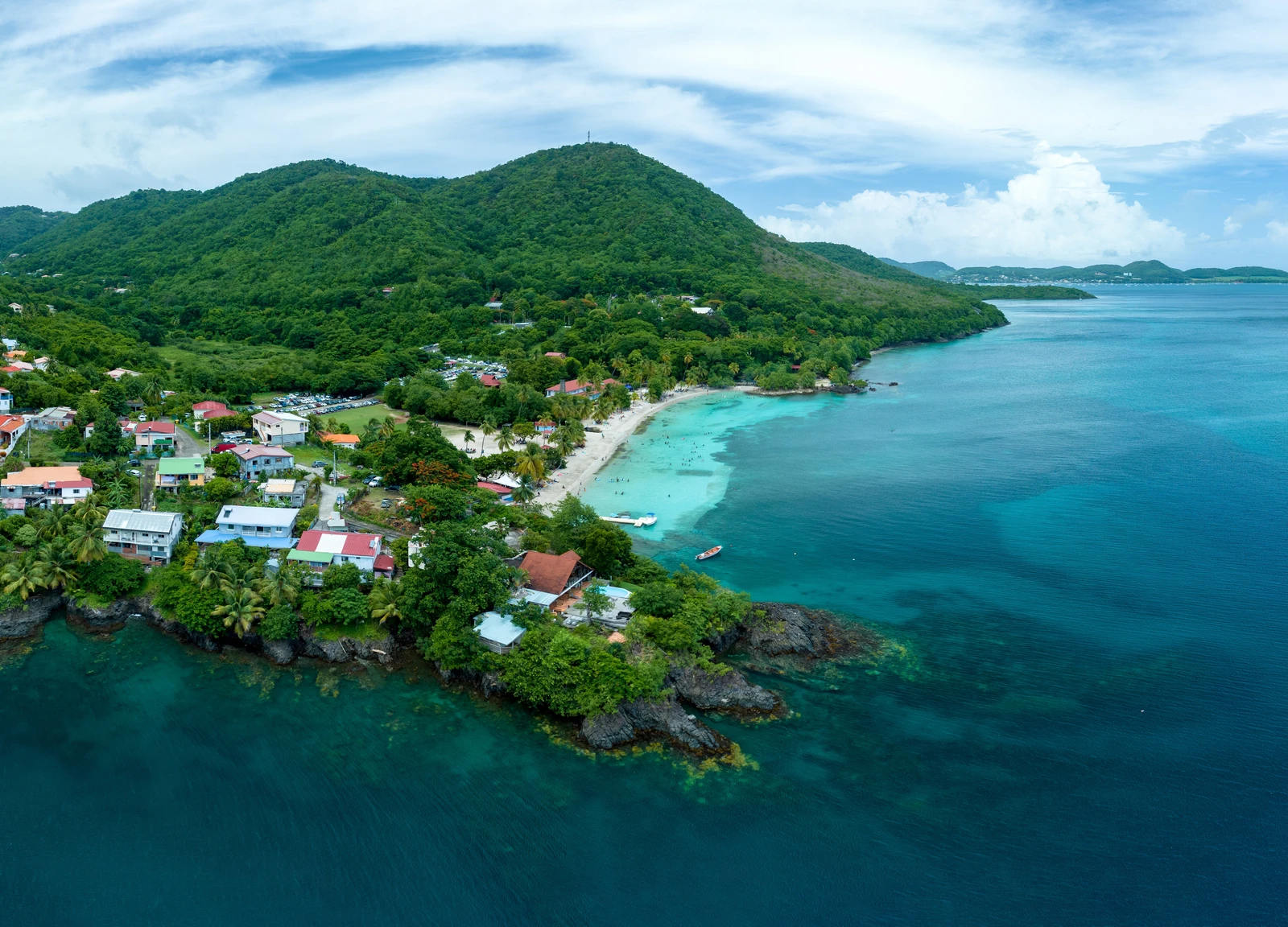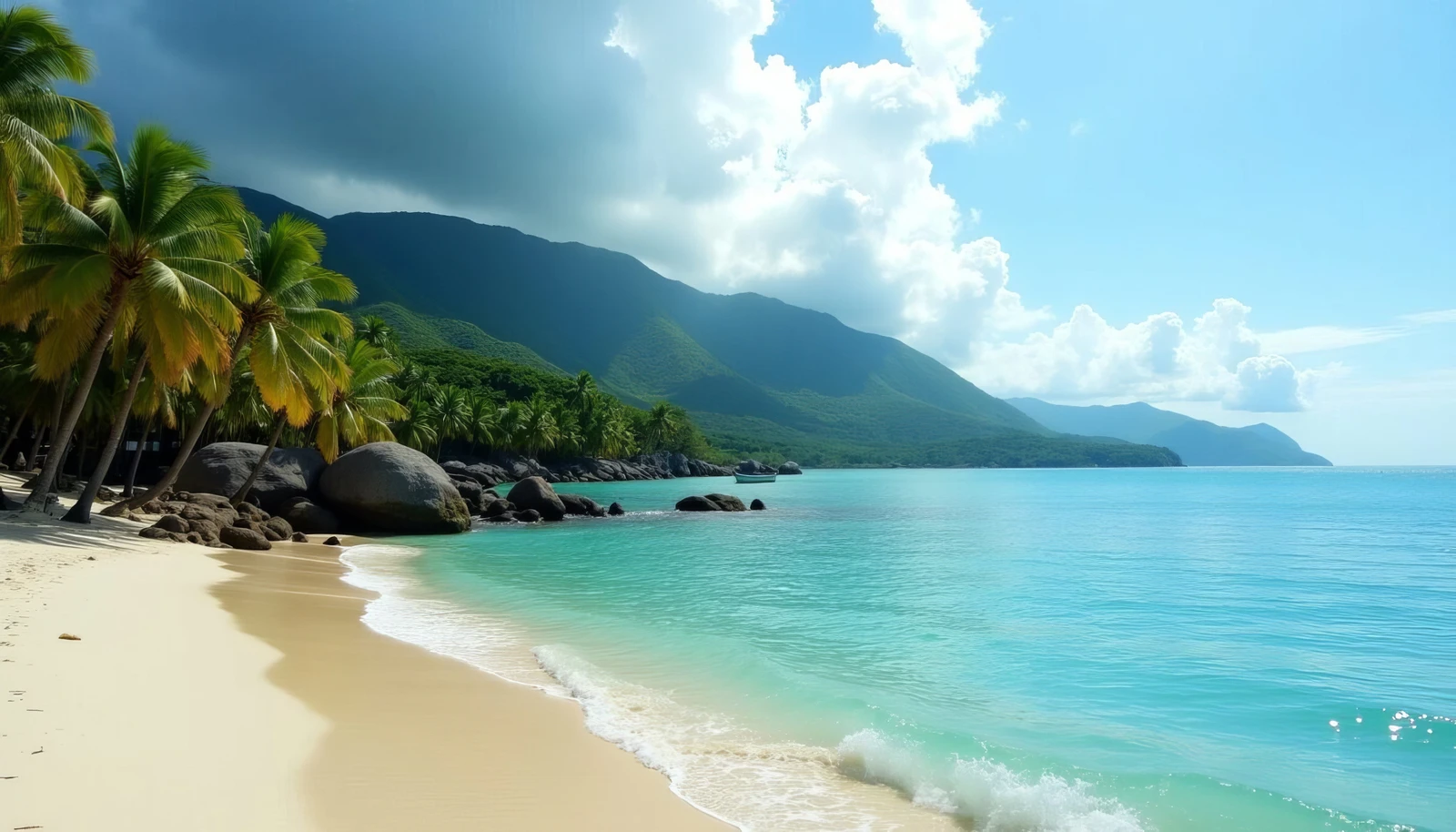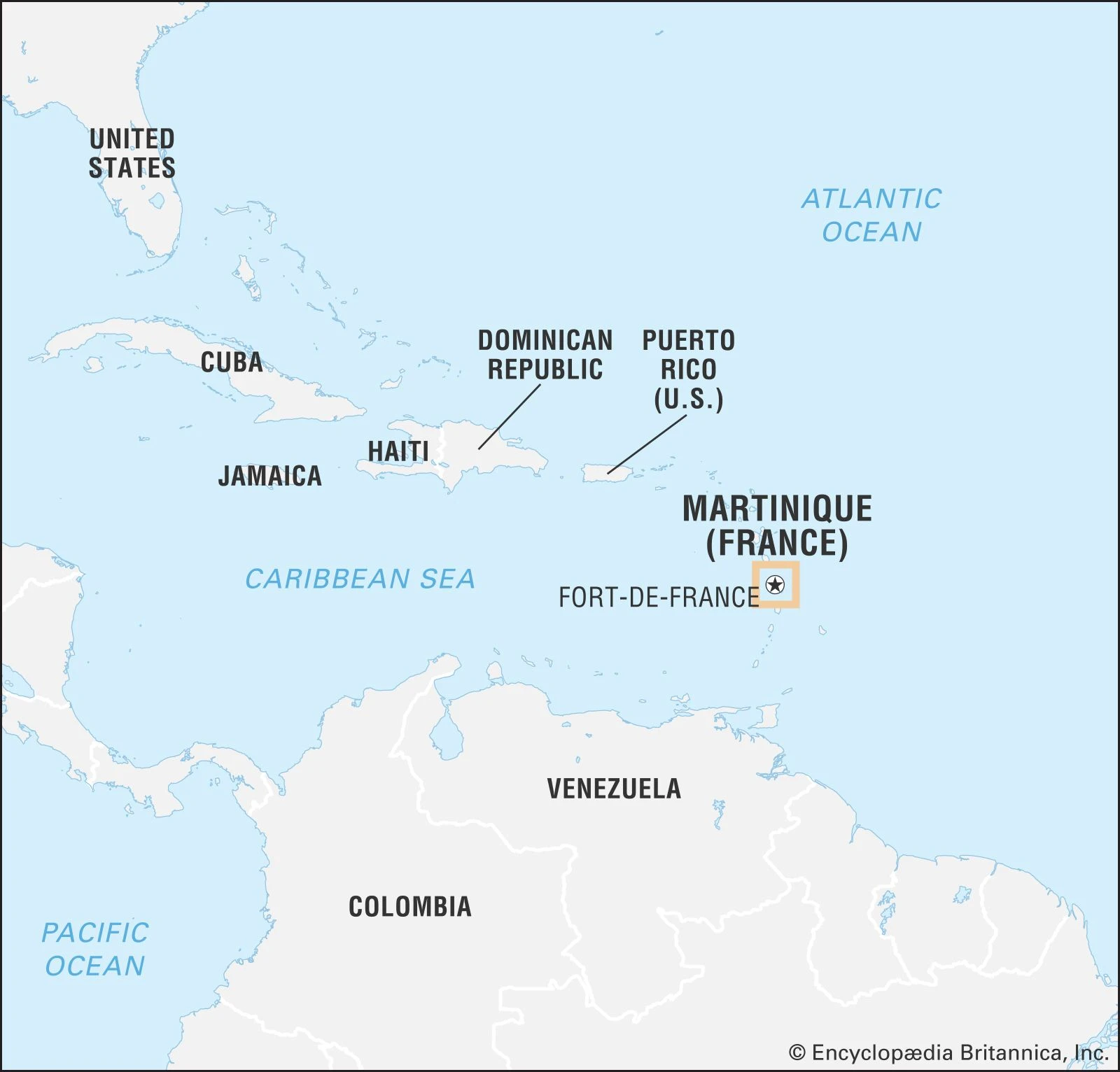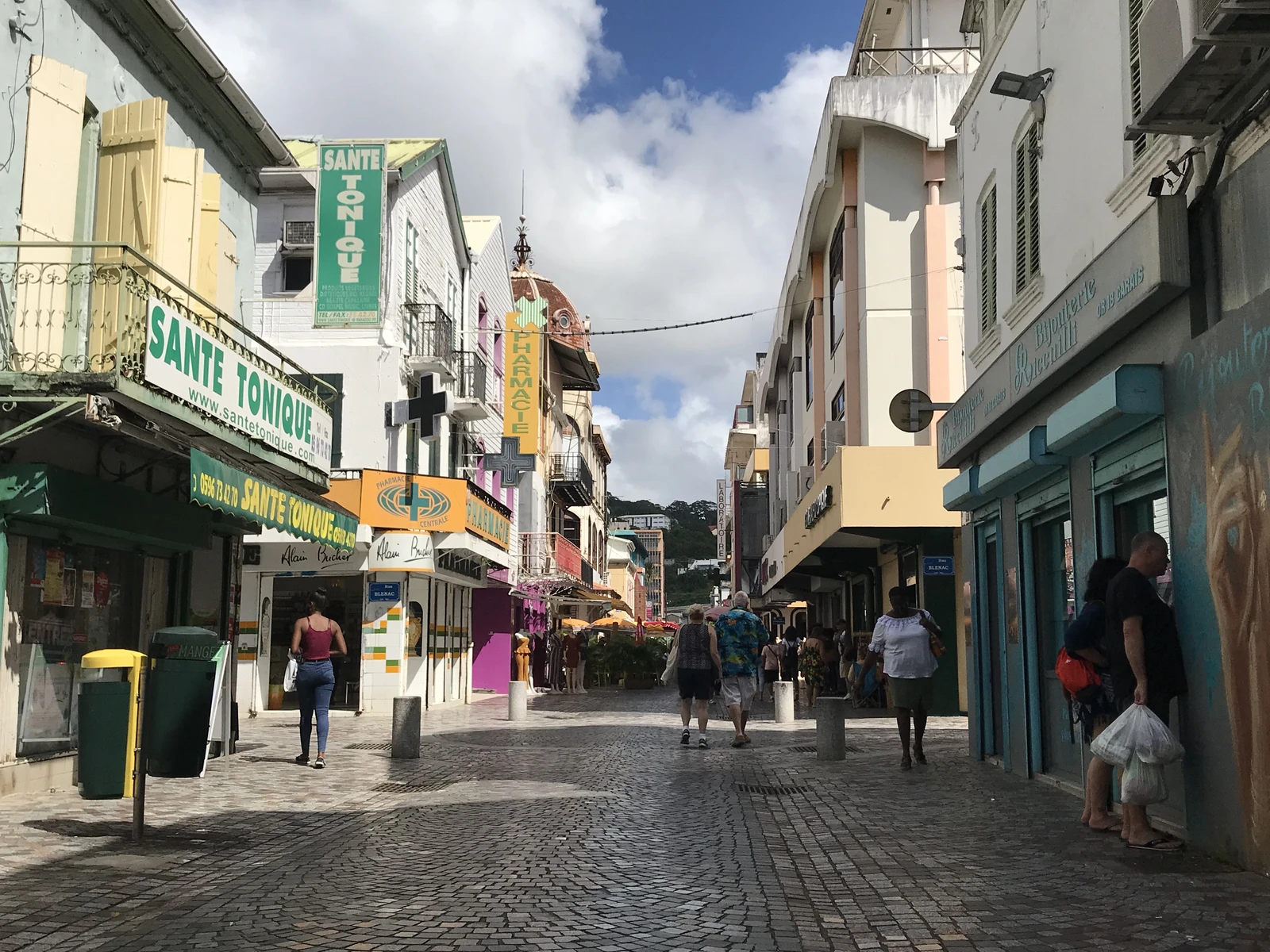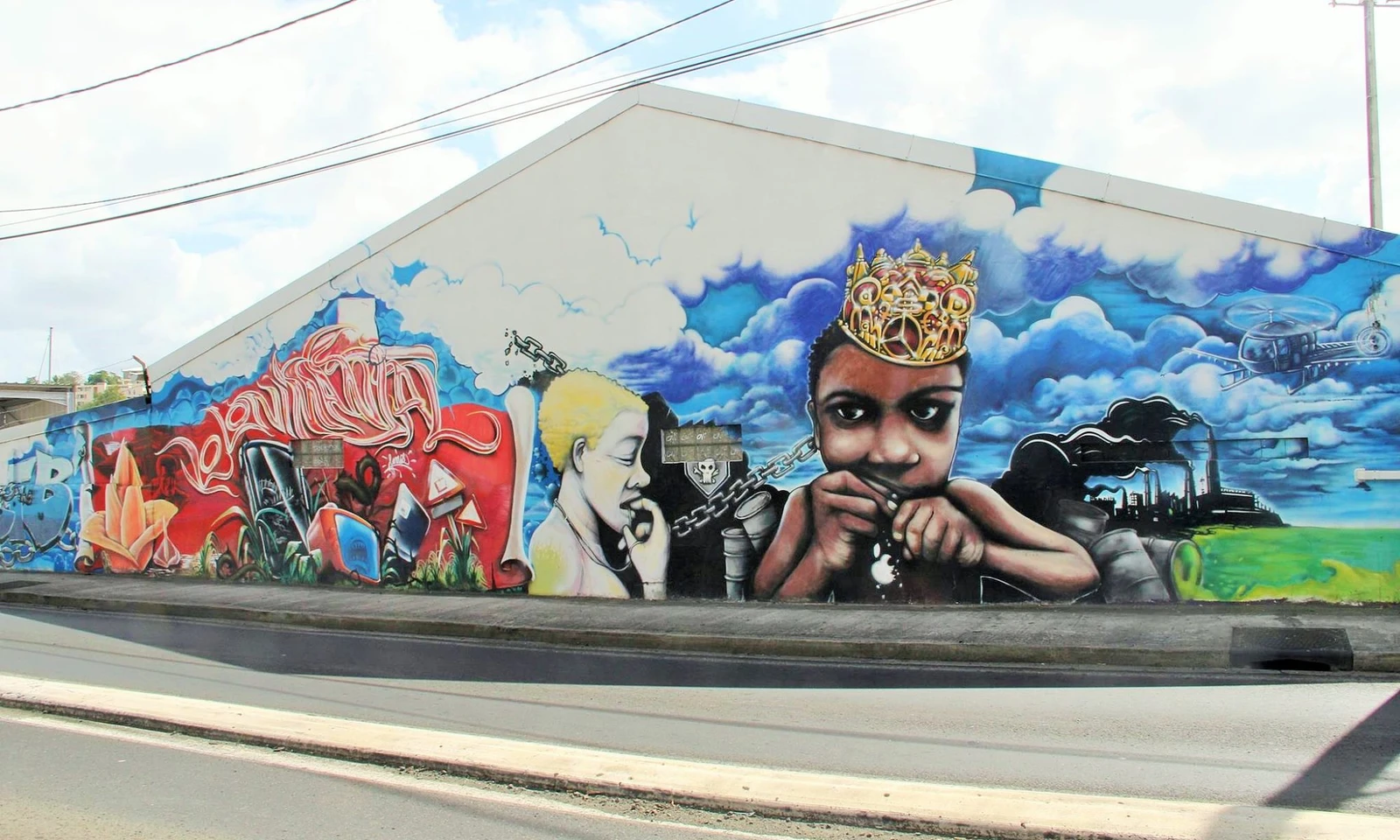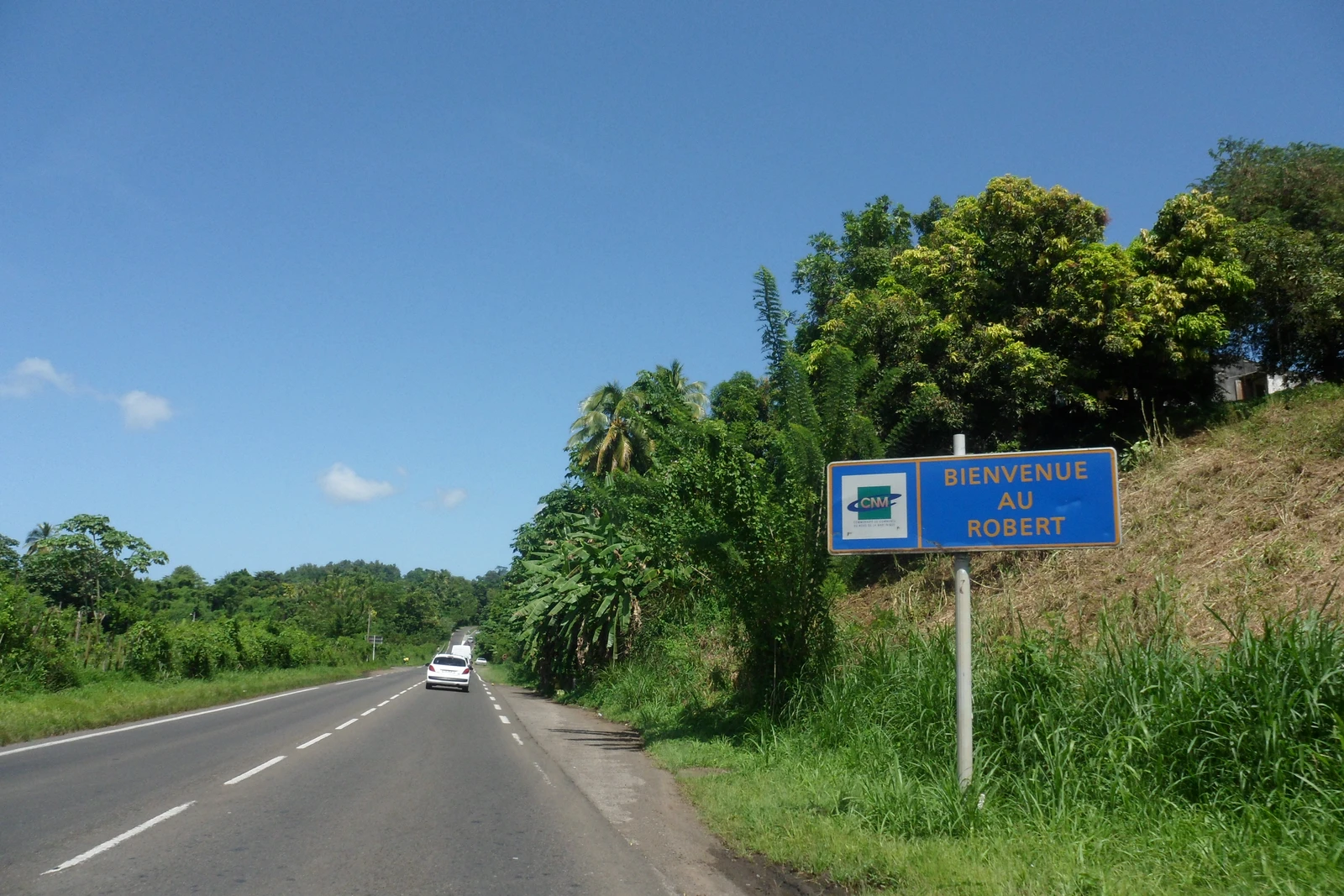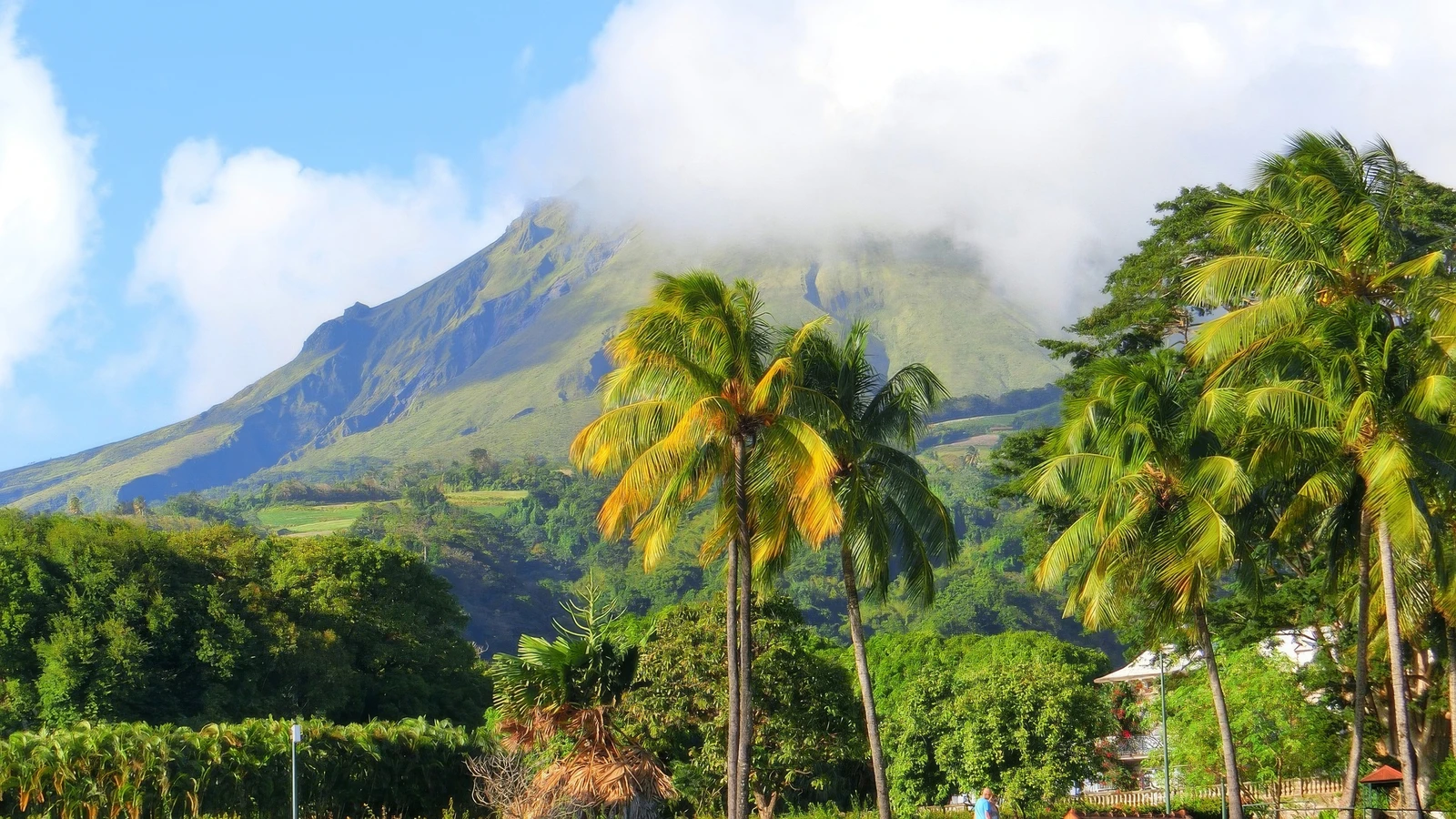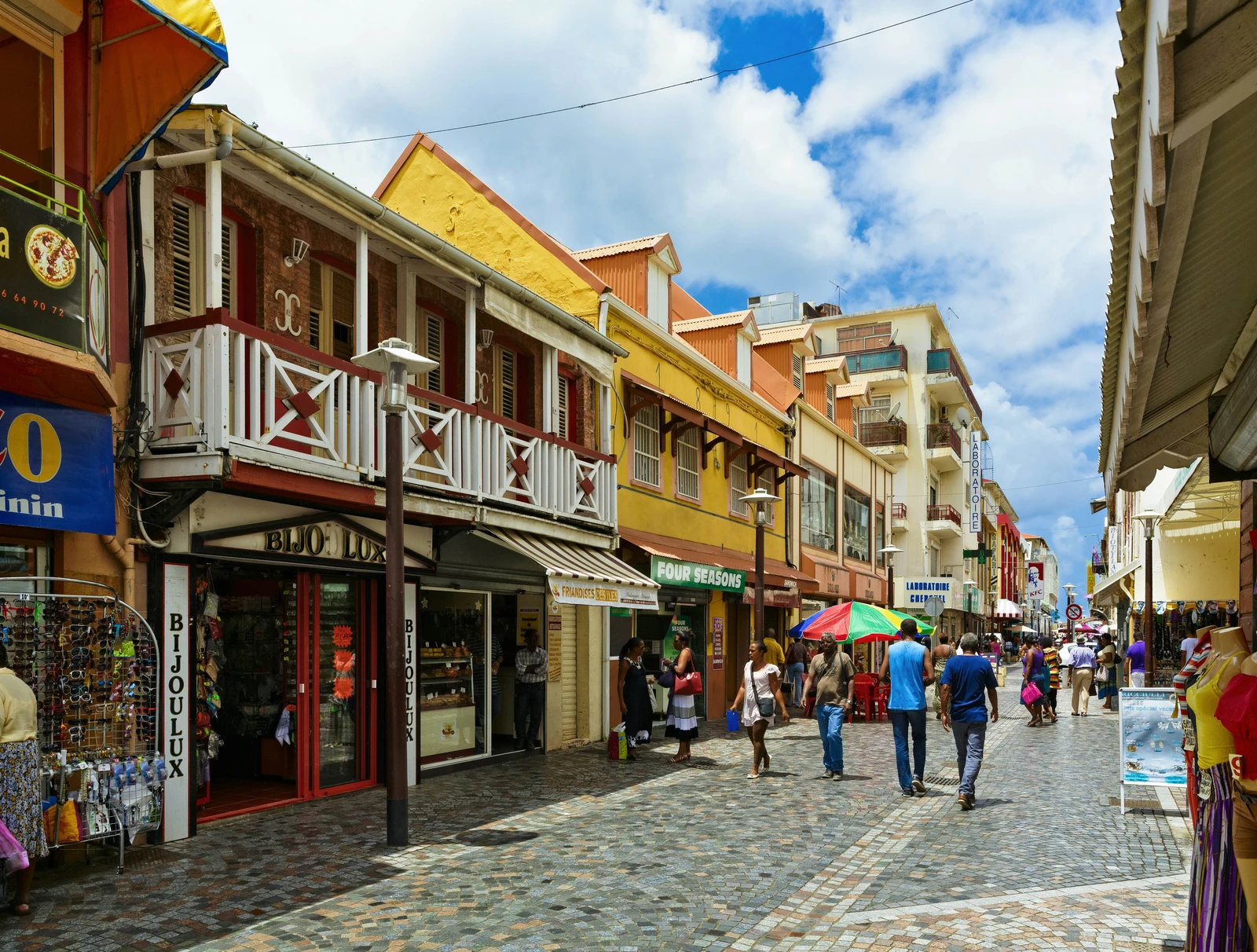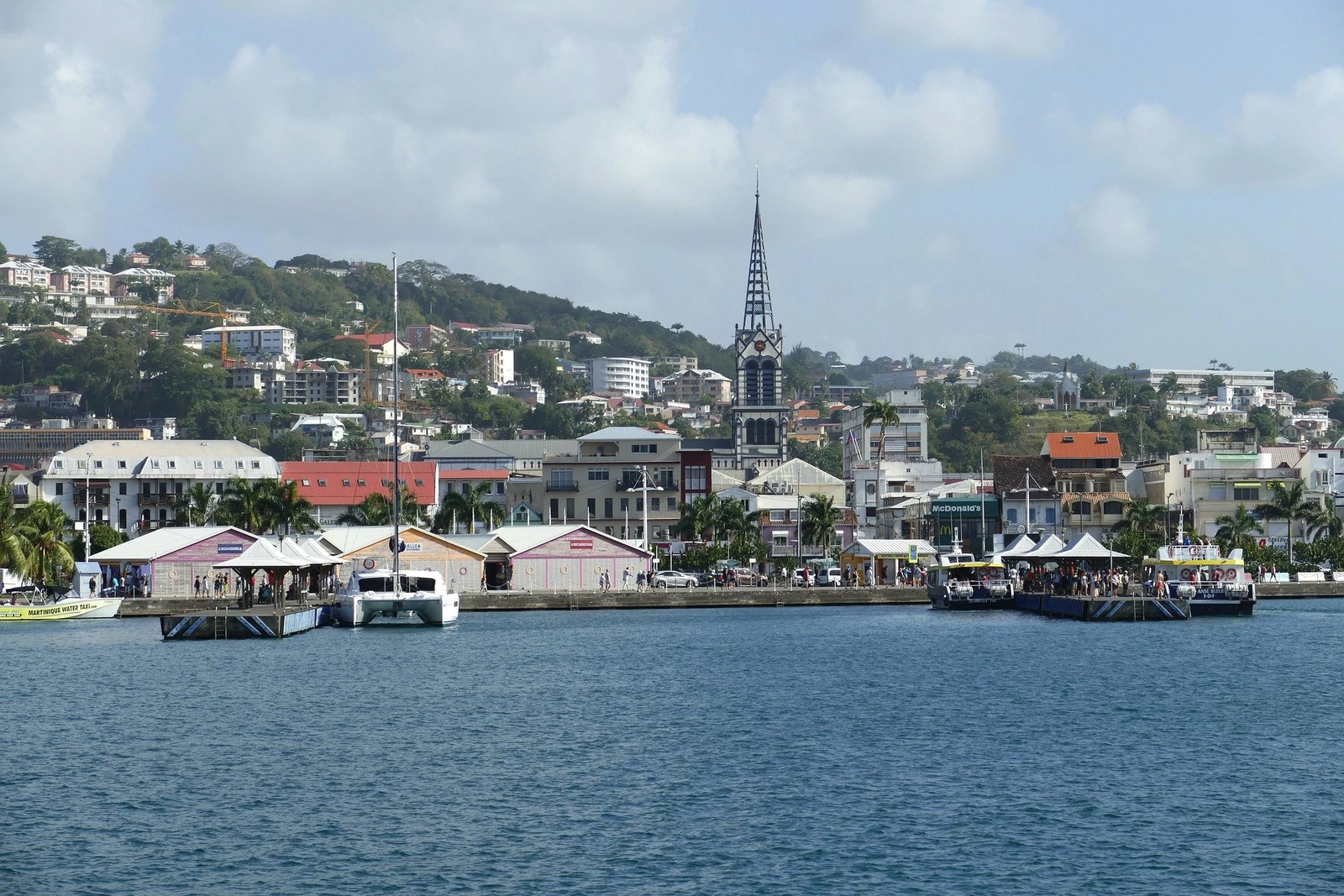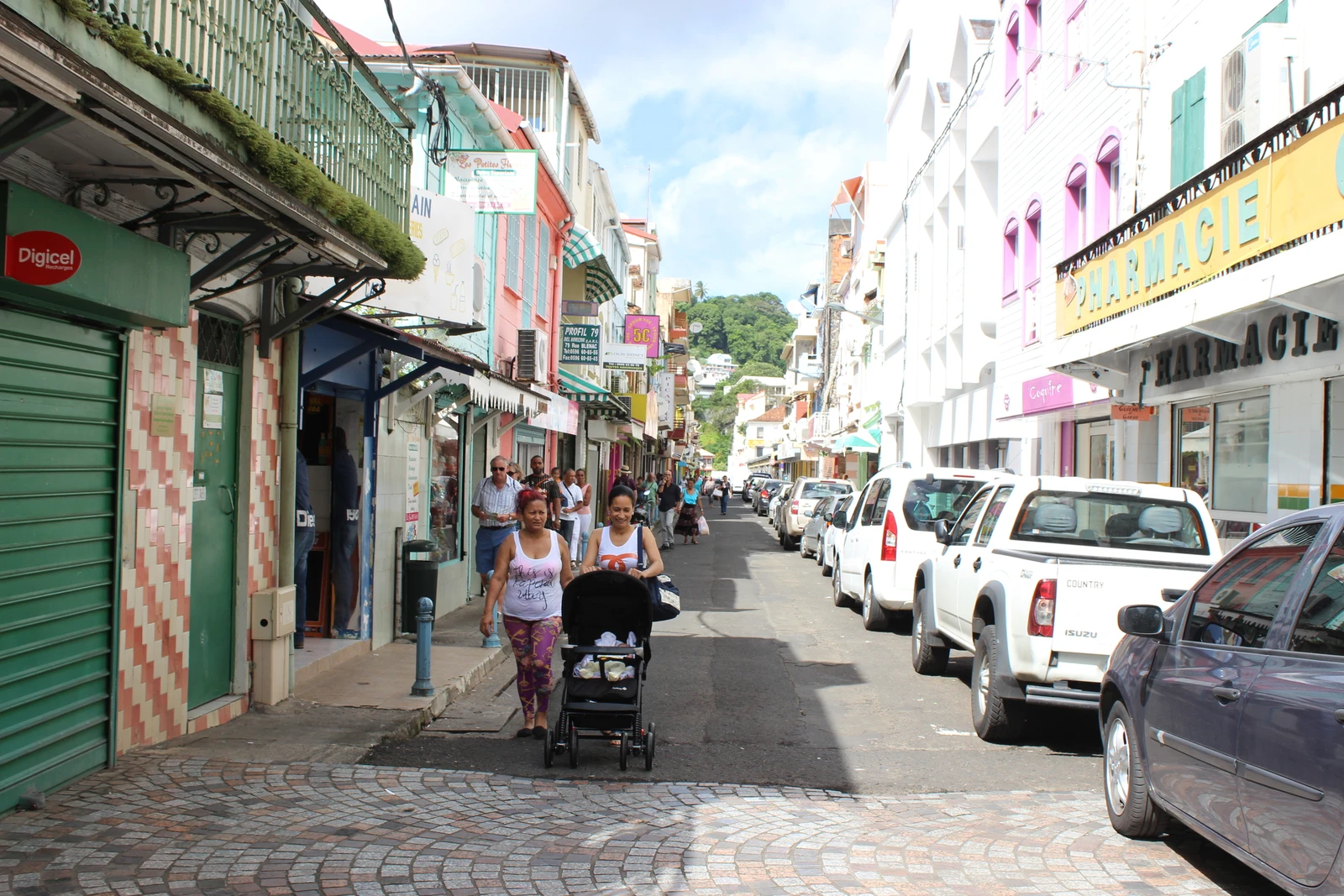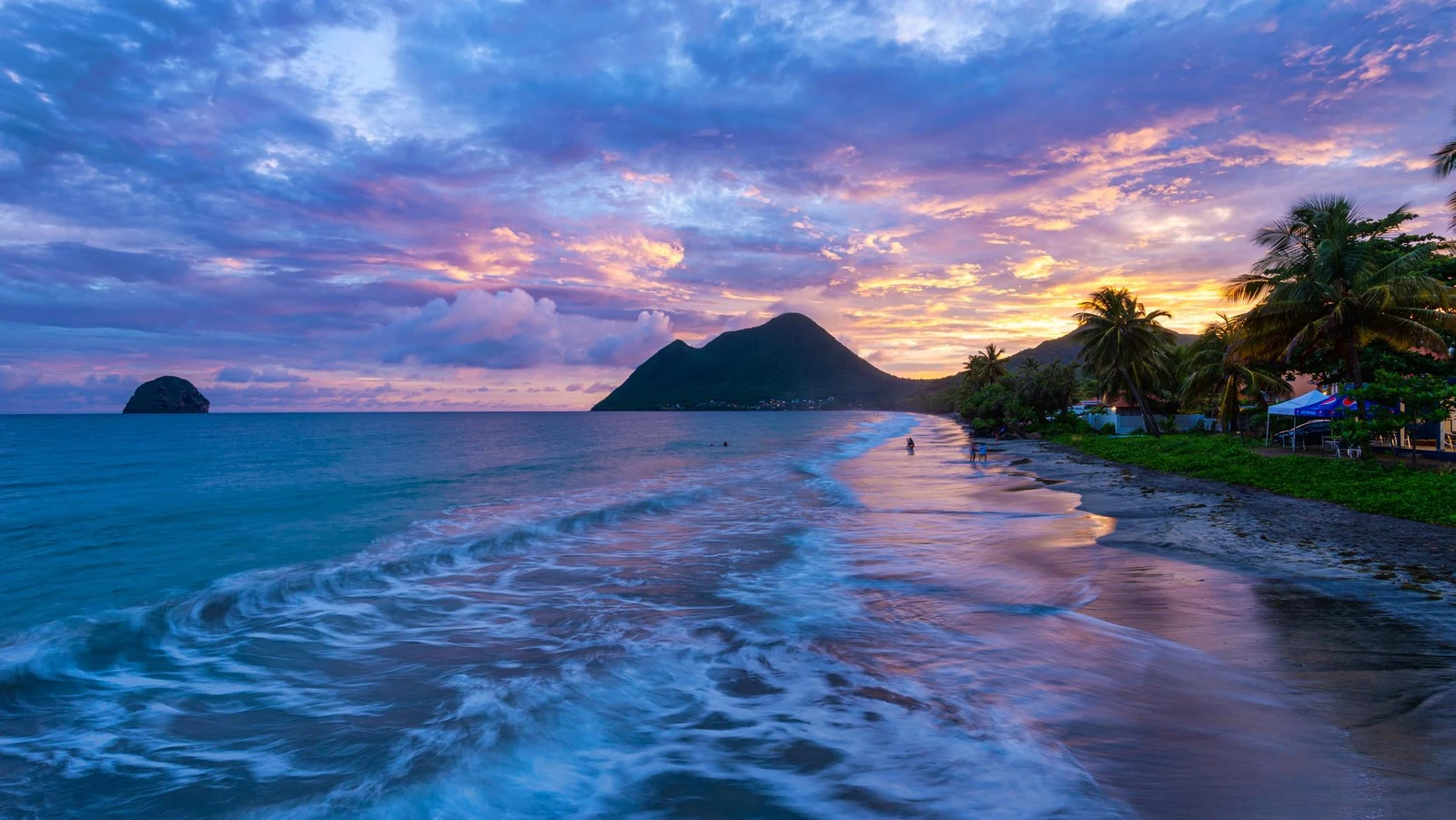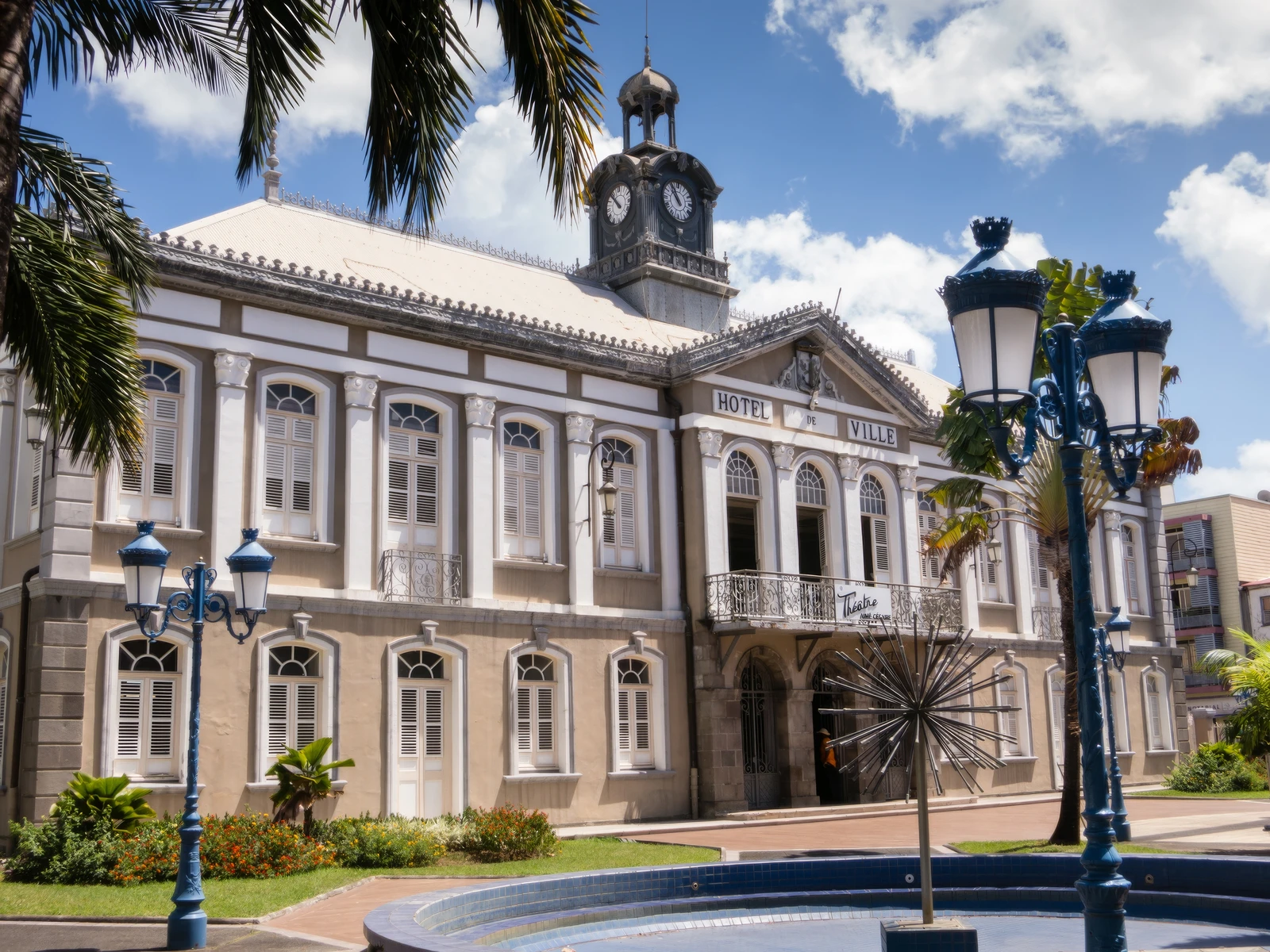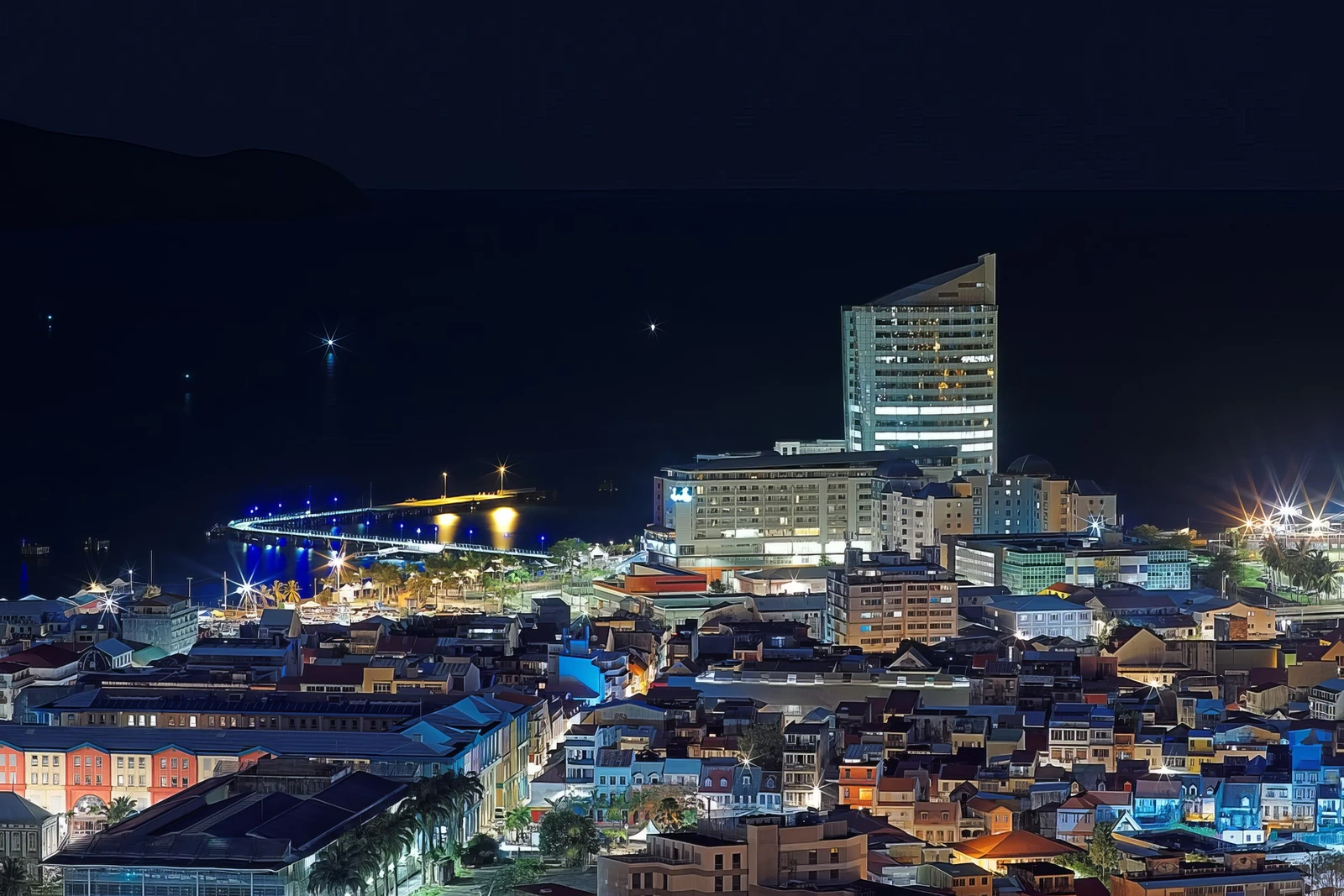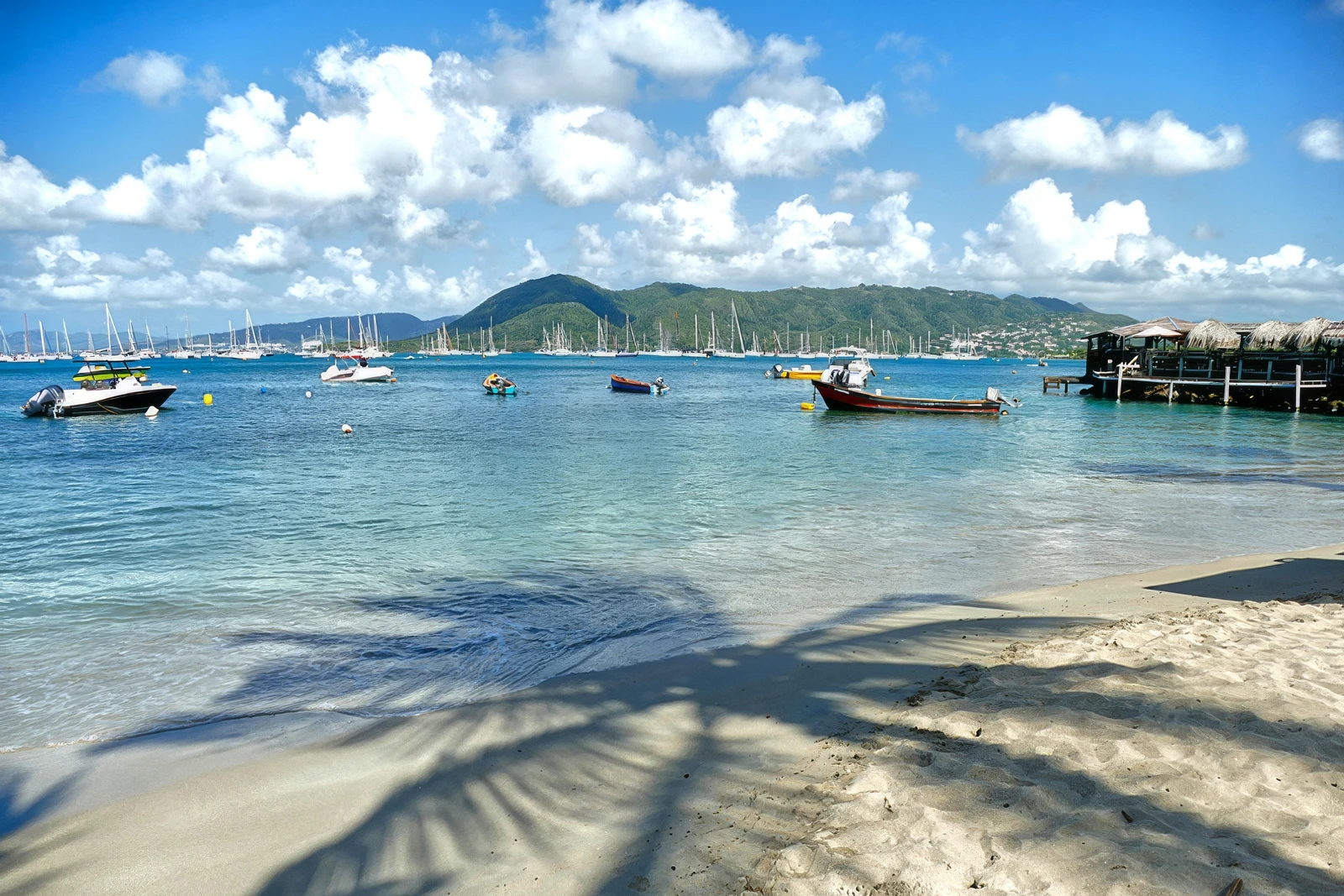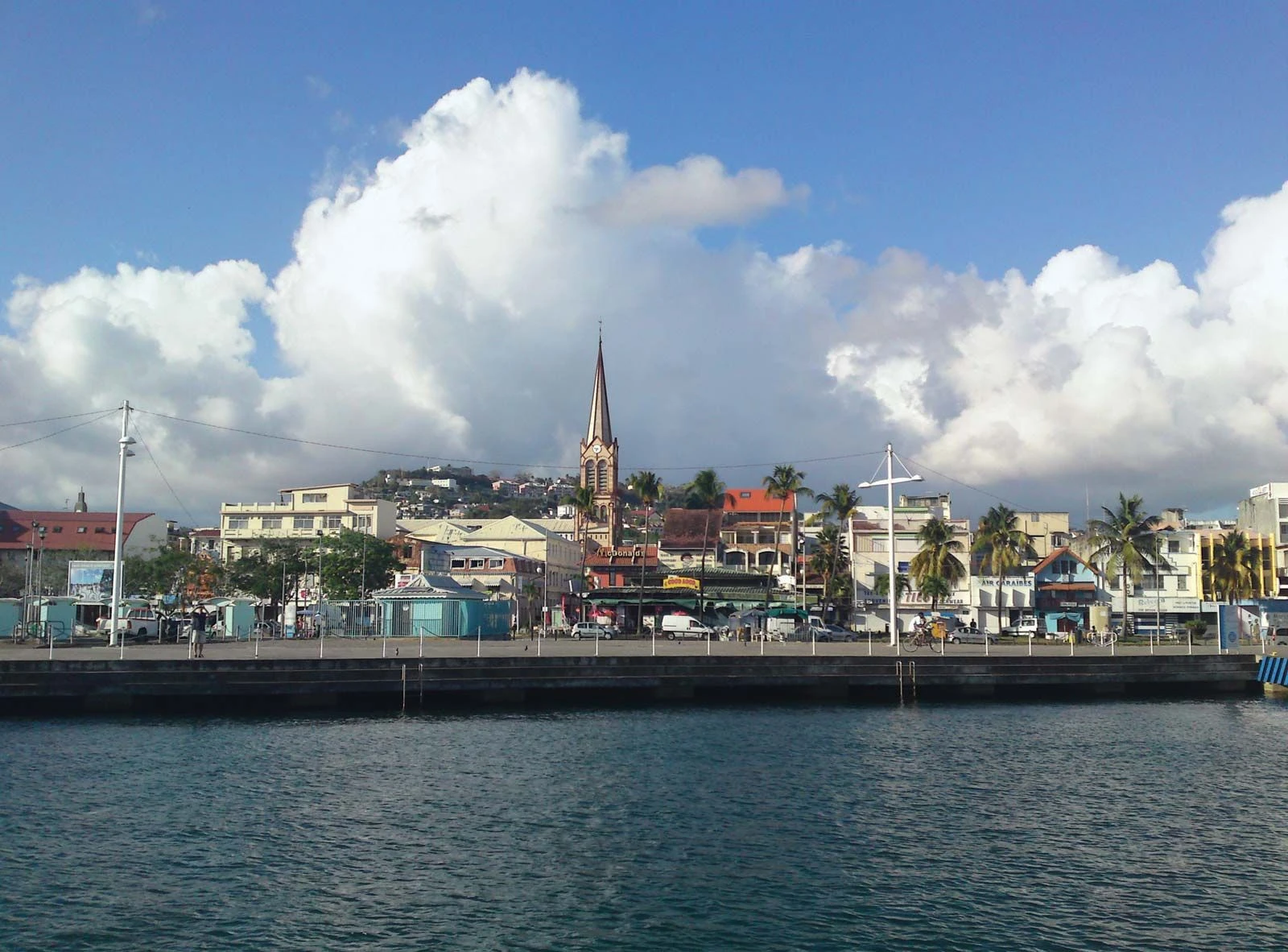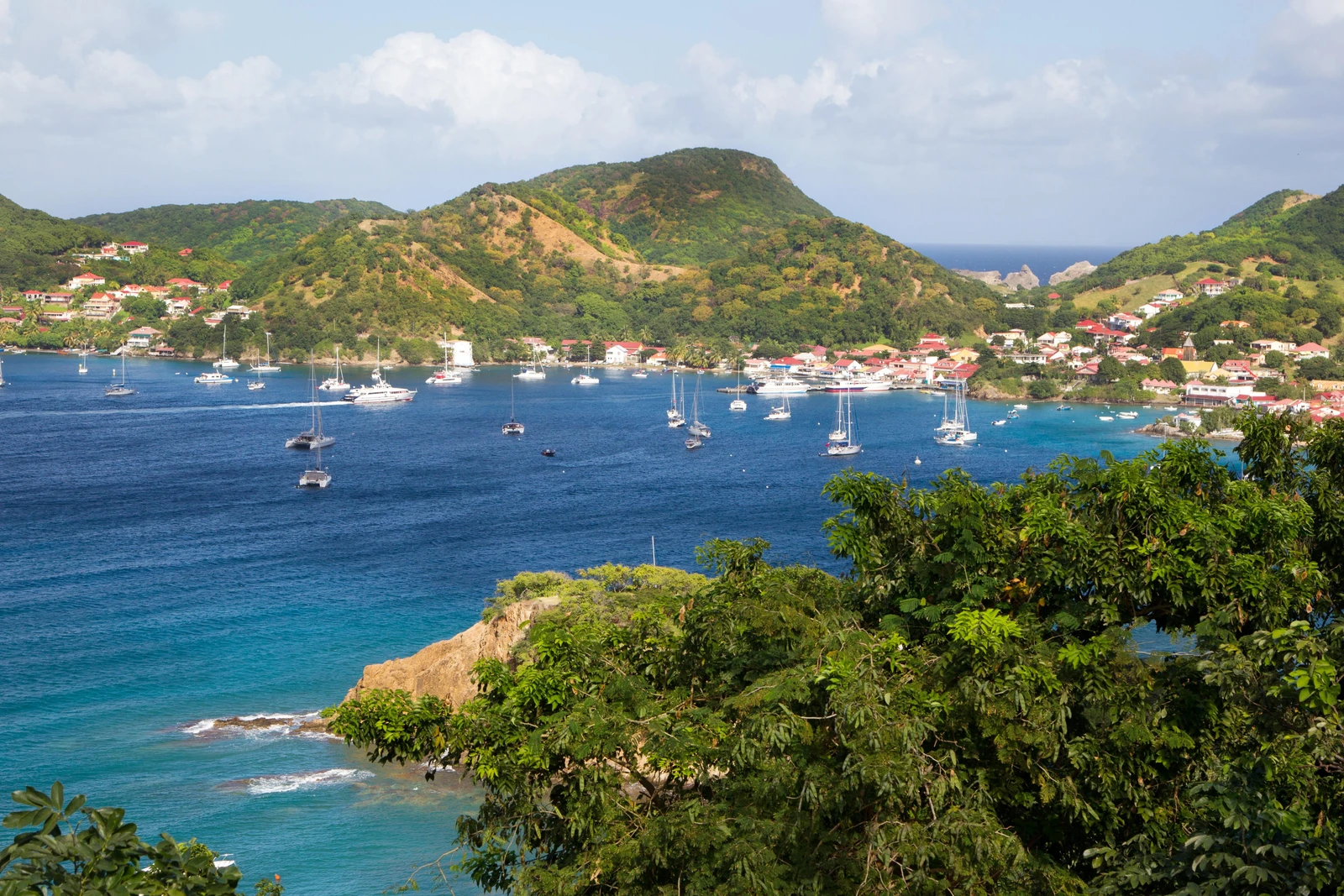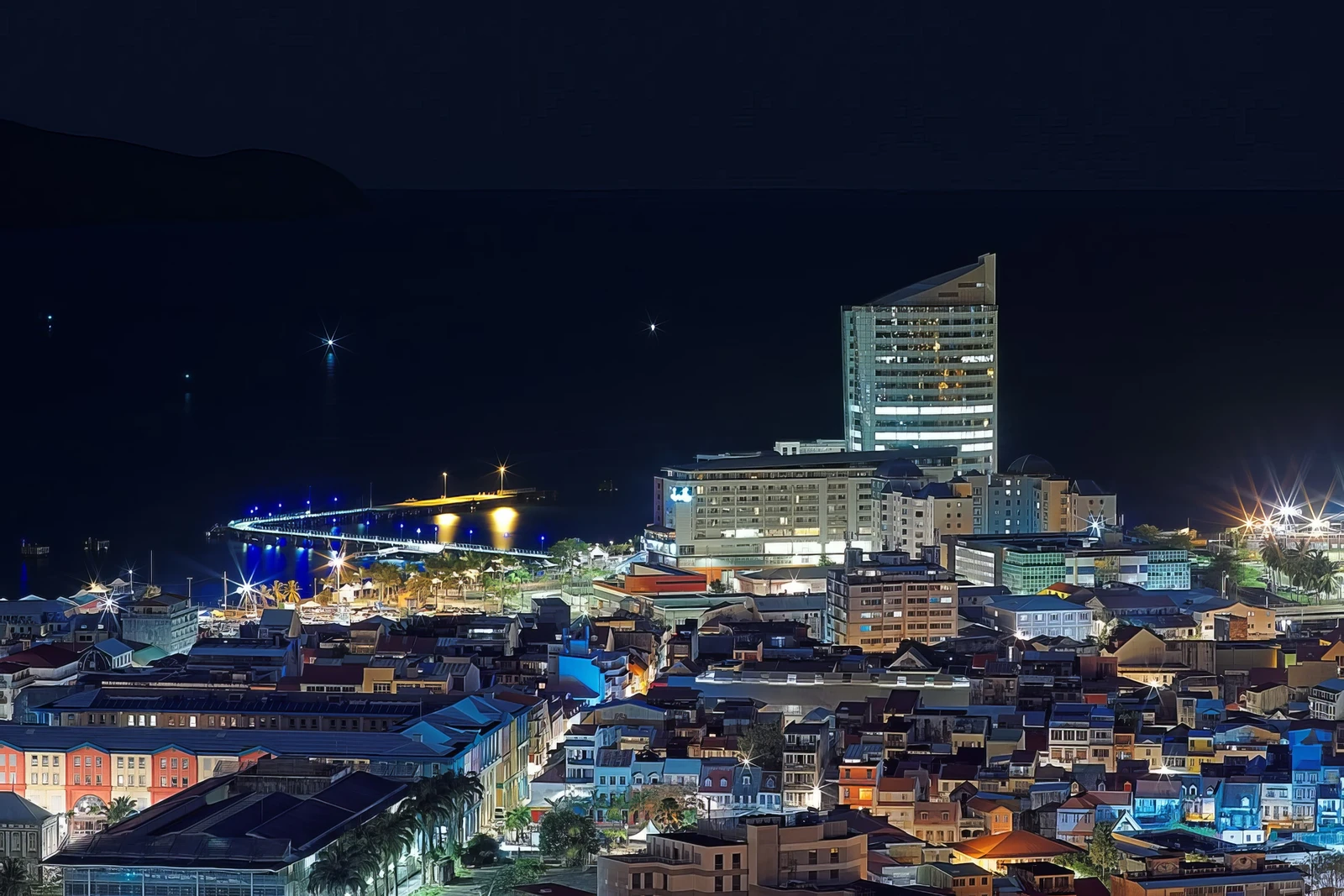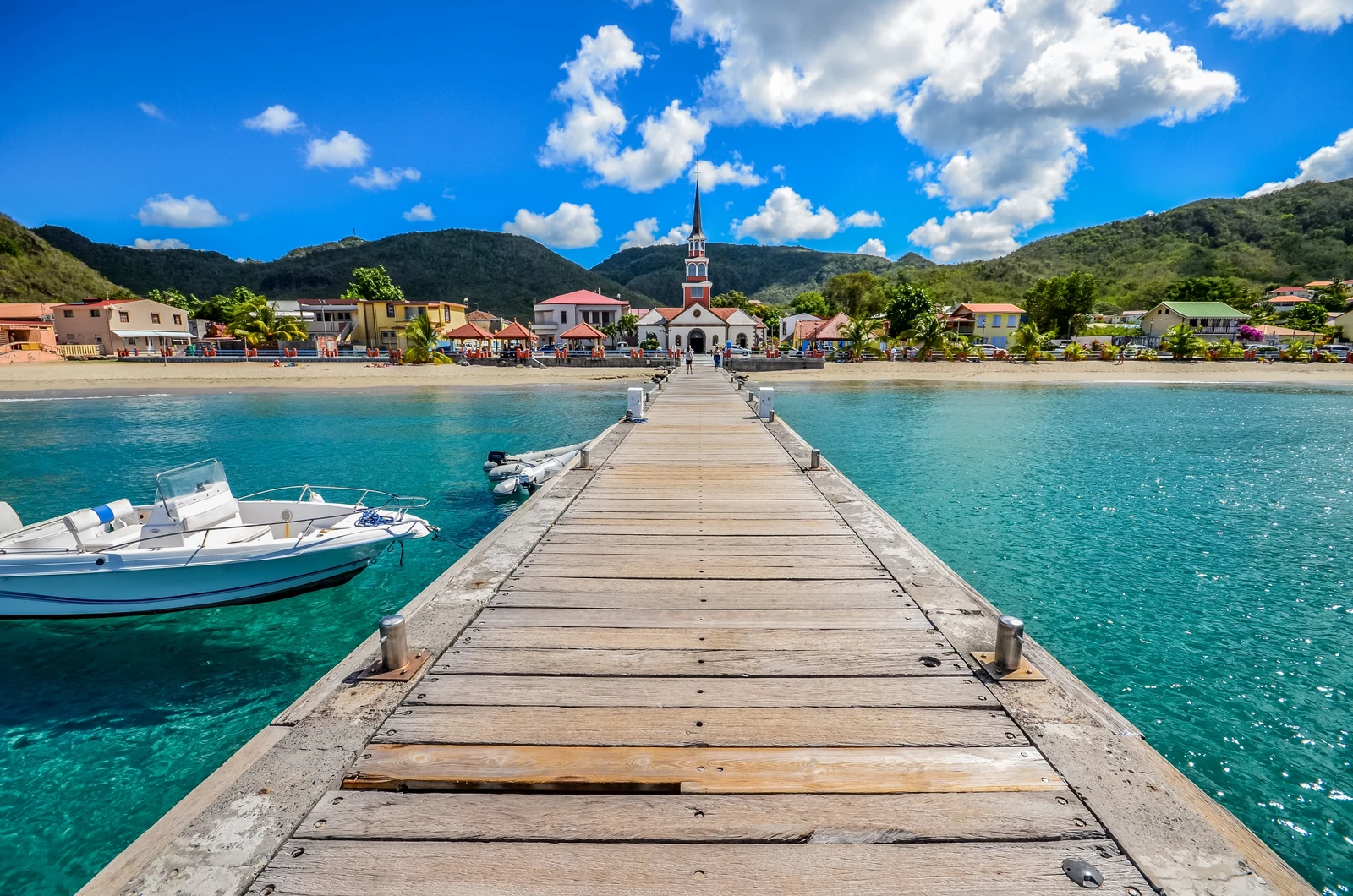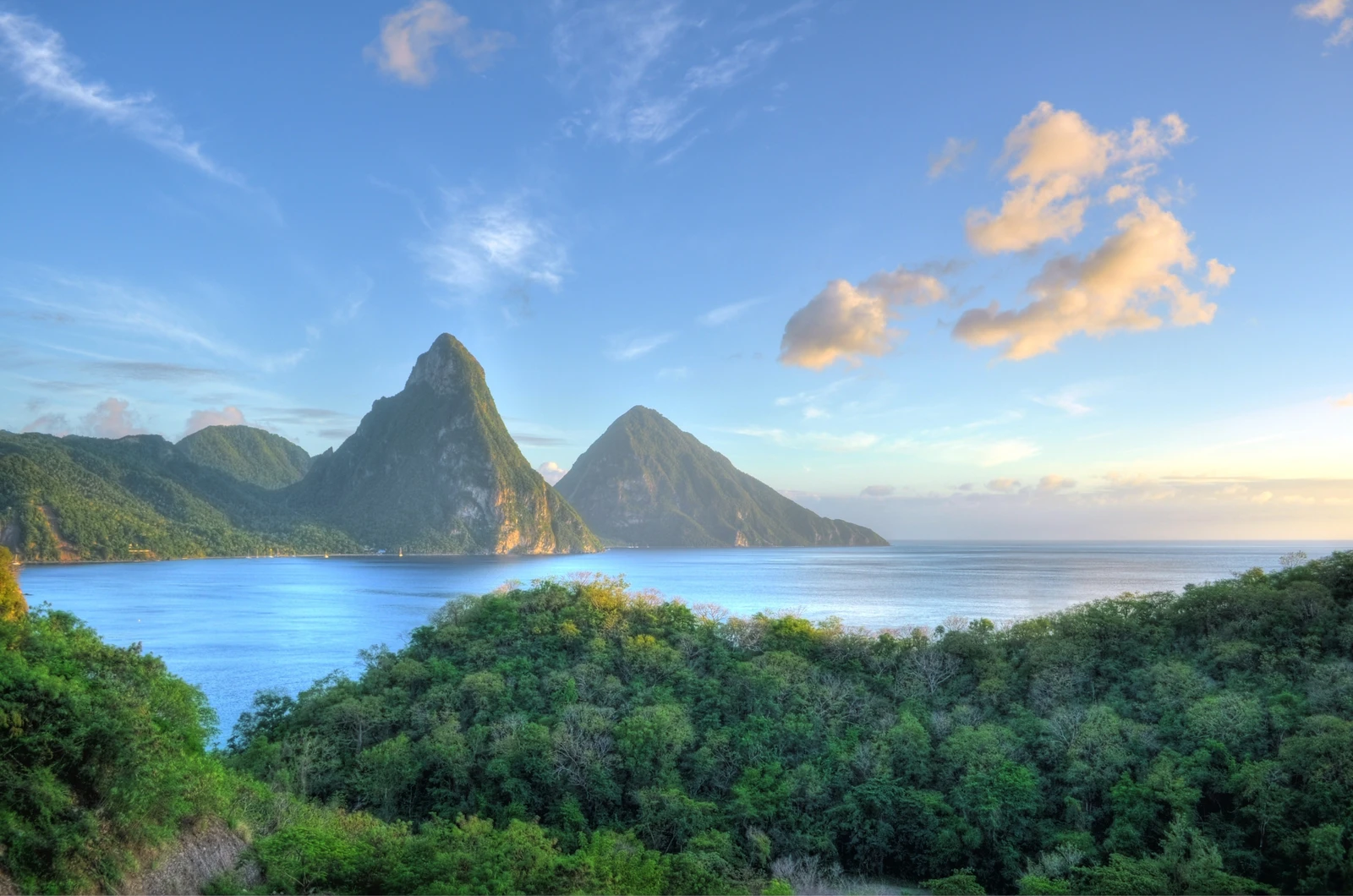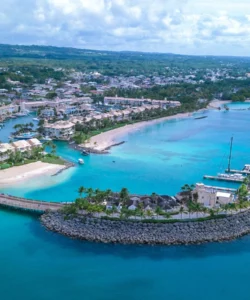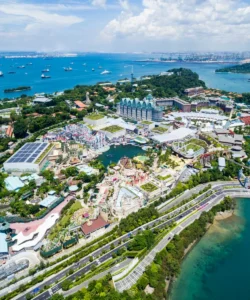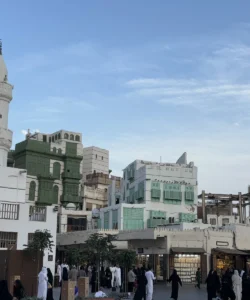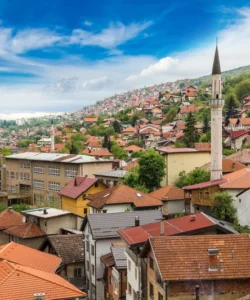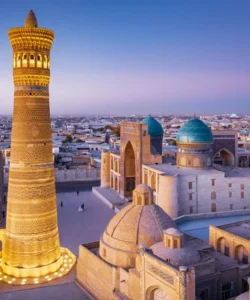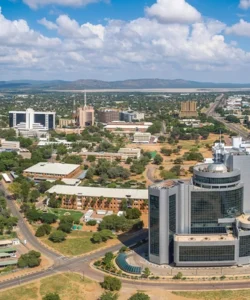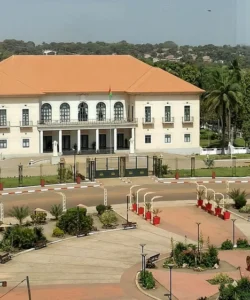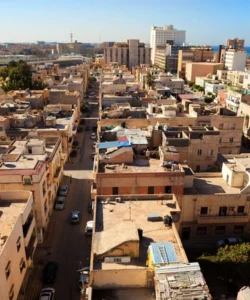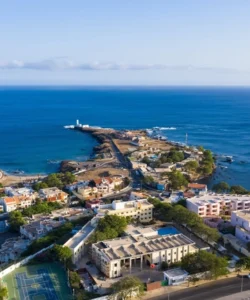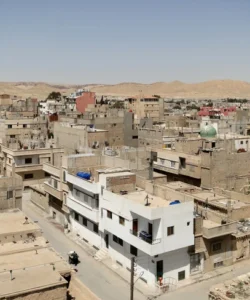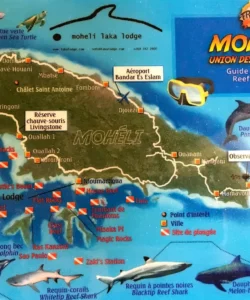Martinique is an island in the Lesser Antilles of the Caribbean, an overseas department and region of France. It’s renowned for its lush volcanic landscapes, beautiful beaches, and a rich cultural fusion of French and Creole influences.
![]()
Here’s a detailed overview:
- Area: Approximately 1,128 km² (436 sq mi). It’s about 80 km (50 mi) long and 35 km (22 mi) wide at its widest point.
- Population: Estimated at around 358,749 inhabitants (as of January 2020).
- Language: French is the official language, but Martinican Creole, a blend of French, African languages, and some Amerindian terms, is widely spoken.
- Currency: Euro (EUR).
- Religion: Predominantly Roman Catholic (around 86%), with smaller Protestant, Muslim, and Baha’i communities.
- Capital: Fort-de-France, the largest city and economic hub, is a bustling port with a vibrant market and historic architecture.
- Cities & Towns:
- Fort-de-France: The capital and main port, known for its busy market, Fort Saint-Louis, and the stunning Schoelcher Library.
- Les Trois-Îlets: A popular tourist area with resorts, beaches, and the birthplace of Empress Josephine.
- Sainte-Anne: Famous for its beautiful white sand beaches, especially Les Salines.
- Saint-Pierre: Known as the “Paris of the Caribbean” before its destruction by Mount Pelée in 1902, now a historical site with ruins and a museum.
- Le Diamant: Named after Diamond Rock, a small island offshore, and known for its memorial to the slave trade.
- Le Marin: A charming town with a large marina, popular for sailing.
- La Trinité: Located on the Atlantic coast, a gateway to the Caravelle Peninsula.
- Le Lamentin: Home to Martinique Aimé Césaire International Airport.
- Les Anses d’Arlet: A picturesque coastal town known for its colorful fishing boats and diving spots.
- Attractions & Wonders:
- Mount Pelée: An active volcano, the highest point on the island, offering challenging hikes and panoramic views.
- Les Salines Beach: Consistently ranked among the Caribbean’s most beautiful beaches, with pristine white sand and clear turquoise waters.
- Balata Botanical Garden (Jardin de Balata): A stunning botanical garden showcasing a vast collection of tropical plants, suspended bridges, and magnificent views.
- Diamond Rock (Rocher du Diamant): An iconic volcanic rock formation in the sea, historically significant and a popular diving site.
- La Savane des Esclaves: A historical park in Les Trois-Îlets that reconstructs the lives of slaves and showcases traditional Creole culture and dwellings.
- Distilleries: Martinique is famous for its agricole rum, and many distilleries like Habitation Clément, Distillerie JM, and La Favorite offer tours and tastings.
- Caravelle Peninsula: A nature reserve on the Atlantic coast with hiking trails, beaches, and the historic Château Dubuc.
- Gorges de la Falaise: A series of stunning waterfalls and pools accessible via a guided hike.
- Fort Saint-Louis: A historic fortress in Fort-de-France offering views of the bay.
- Musée de la Pagerie: The birthplace of Empress Josephine, offering insights into her life and the island’s history.
- Architecture: Martinique’s architecture blends colonial French elegance with Creole adaptations, evident in vibrant wooden houses with intricate fretwork, grand plantation homes (habitations), and charming churches. Fort-de-France features historical buildings like the Cathédrale Saint-Louis and the Schoelcher Library, often incorporating ornate ironwork and classic European designs. You’ll also see more contemporary structures that cater to the tropical climate, with open spaces and natural ventilation.
- Roads: Martinique has a well-developed road network of over 2,100 kilometers, with good quality paved highways. The A1 expressway connects the airport (Le Lamentin) to Fort-de-France. Driving is on the right. While major roads are good, some smaller roads, especially in mountainous or rural areas, can be winding and narrow. Renting a car is the most popular way to explore the island independently.
- Hotels: Martinique offers a diverse range of accommodation, from luxurious resorts to charming boutique hotels, guesthouses, and vacation rentals. Popular areas for hotels include Les Trois-Îlets (Pointe du Bout), Sainte-Anne, and Fort-de-France. Options like Hotel French Coco, Hôtel Bambou & Spa, and Hotel Bakoua Les Trois Ilets are highly rated.
- Restaurants & Cuisine: Martinique’s cuisine is a delightful fusion of French, African, and Indian influences, creating a unique Creole flavor. Seafood is a staple.
- Must-try dishes:
- Accras de Morue: Crispy cod fritters, a popular appetizer.
- Boudin Créole: A savory blood sausage.
- Colombo de Poulet: A flavorful chicken curry dish, reflecting Indian influences.
- Poulet Boucané: Smoked chicken, often prepared outdoors.
- Matoutou de Crabes: A traditional spicy crab stew, especially popular during Easter.
- Grilled Dorado (Mahi-Mahi) or Langouste (Lobster): Freshly caught seafood, often simply grilled.
- Ti’ Punch: The signature local cocktail, made with white rum, lime, and sugarcane syrup.
- Agoulou: A popular local sandwich.
- You’ll find a wide array of restaurants, from casual beachside shacks (lolo) serving fresh grilled fish to upscale French and Creole establishments.
- Must-try dishes:
